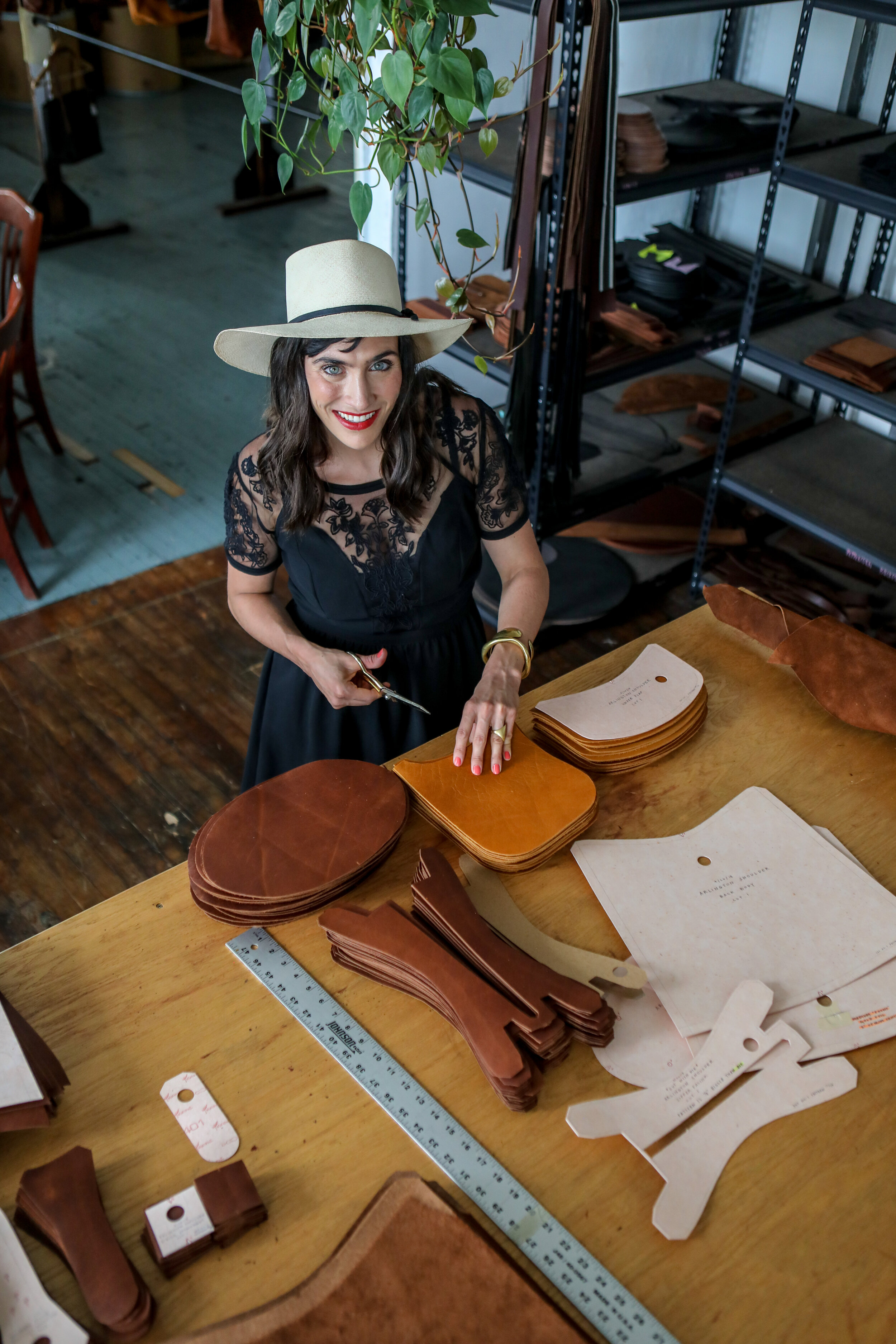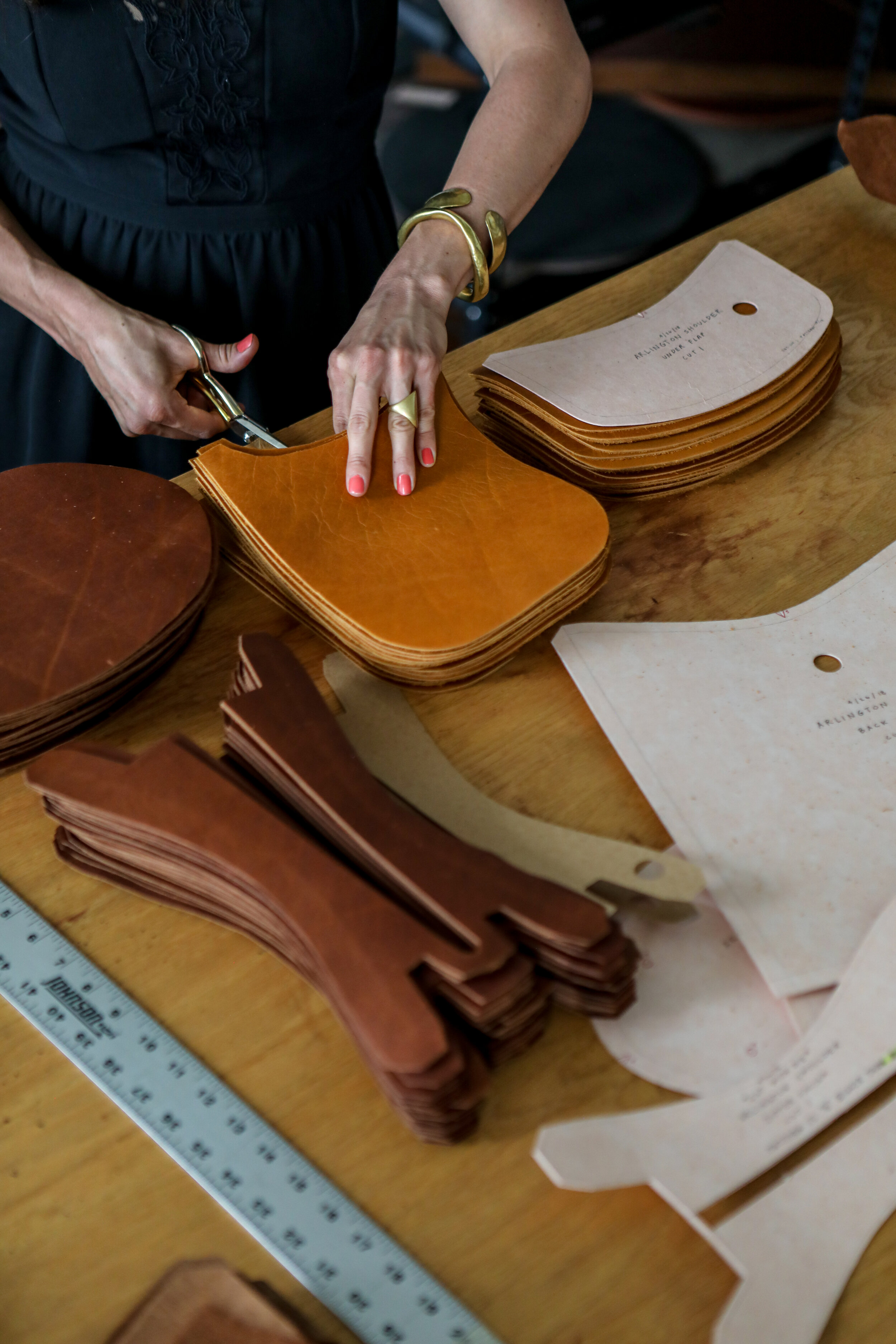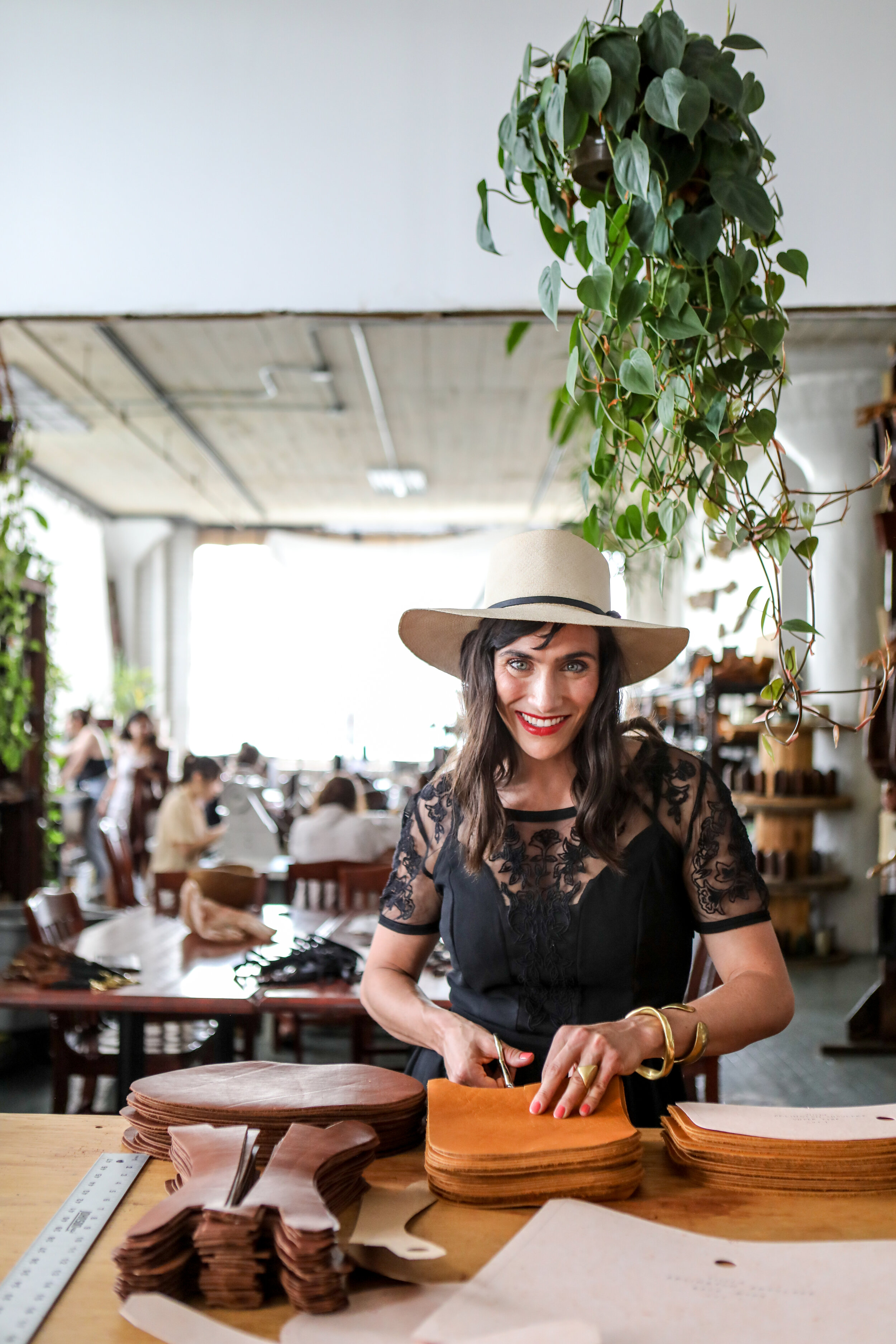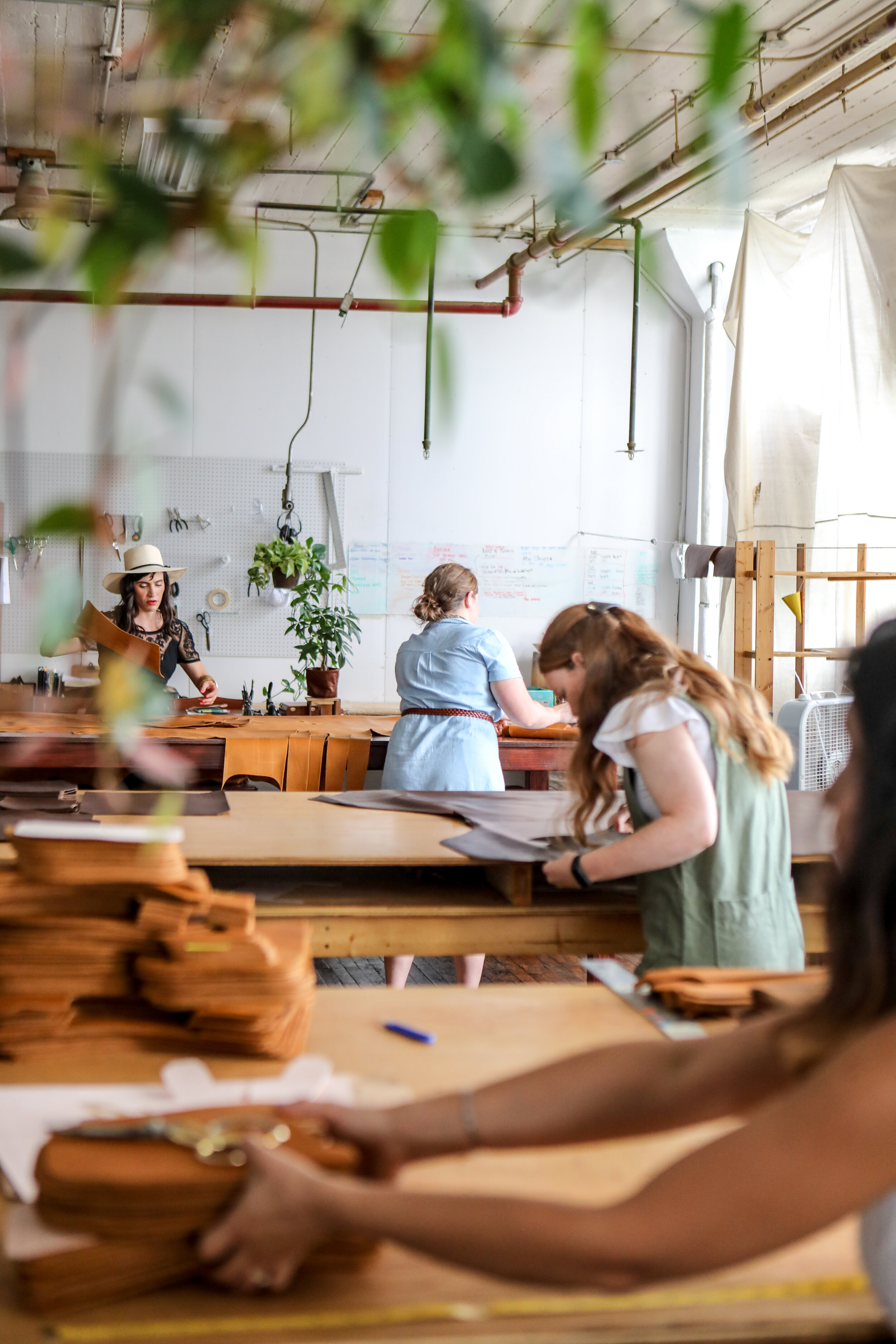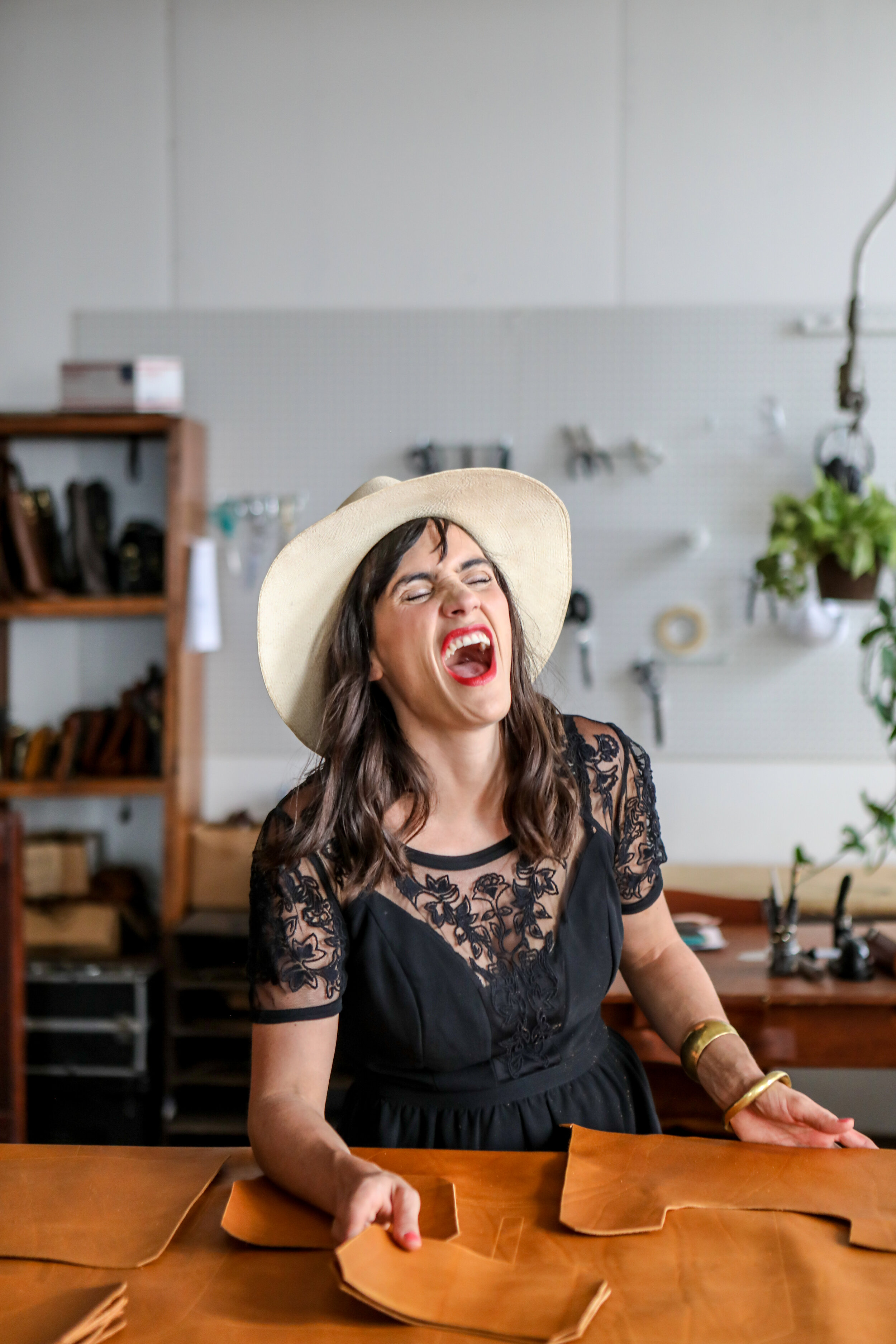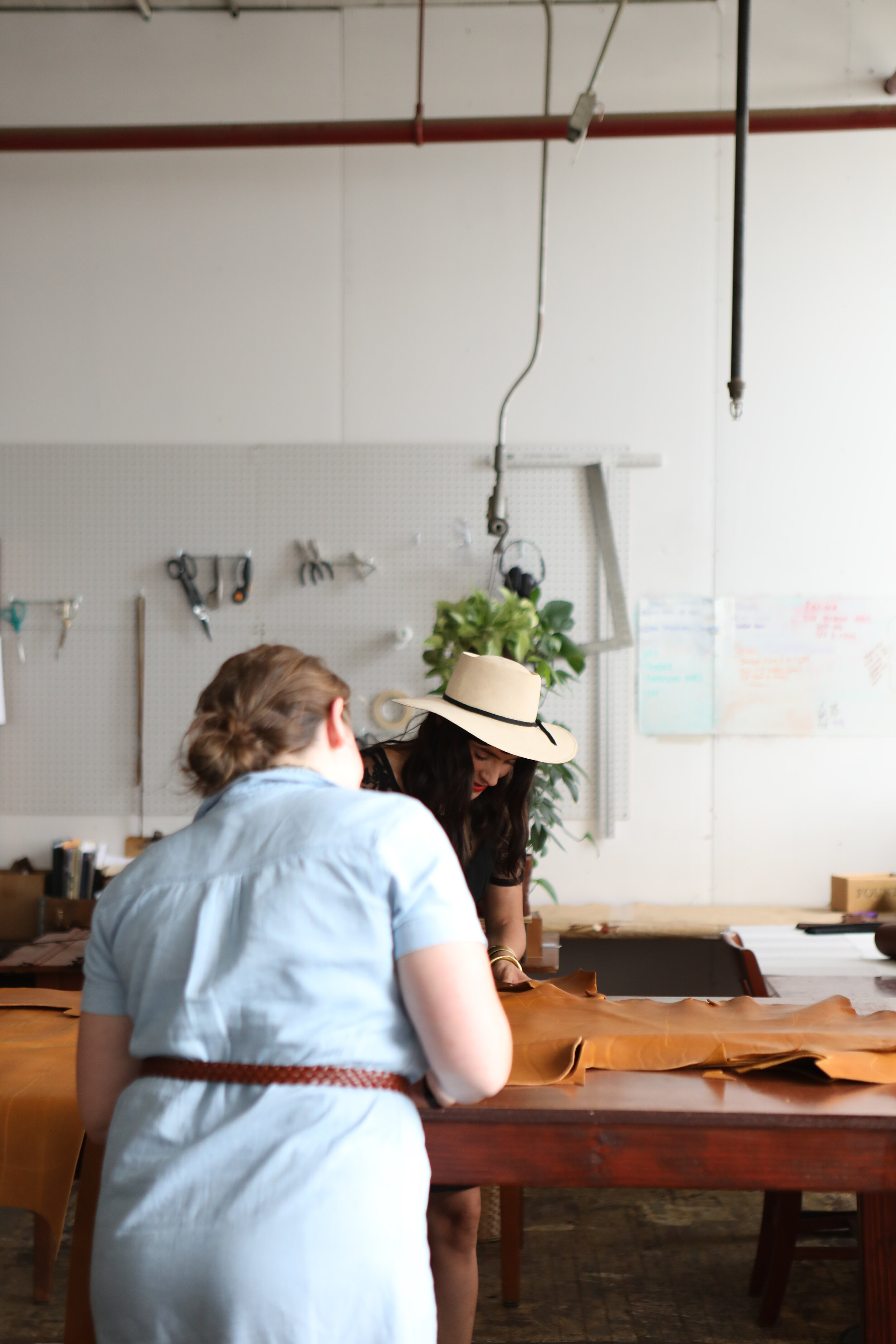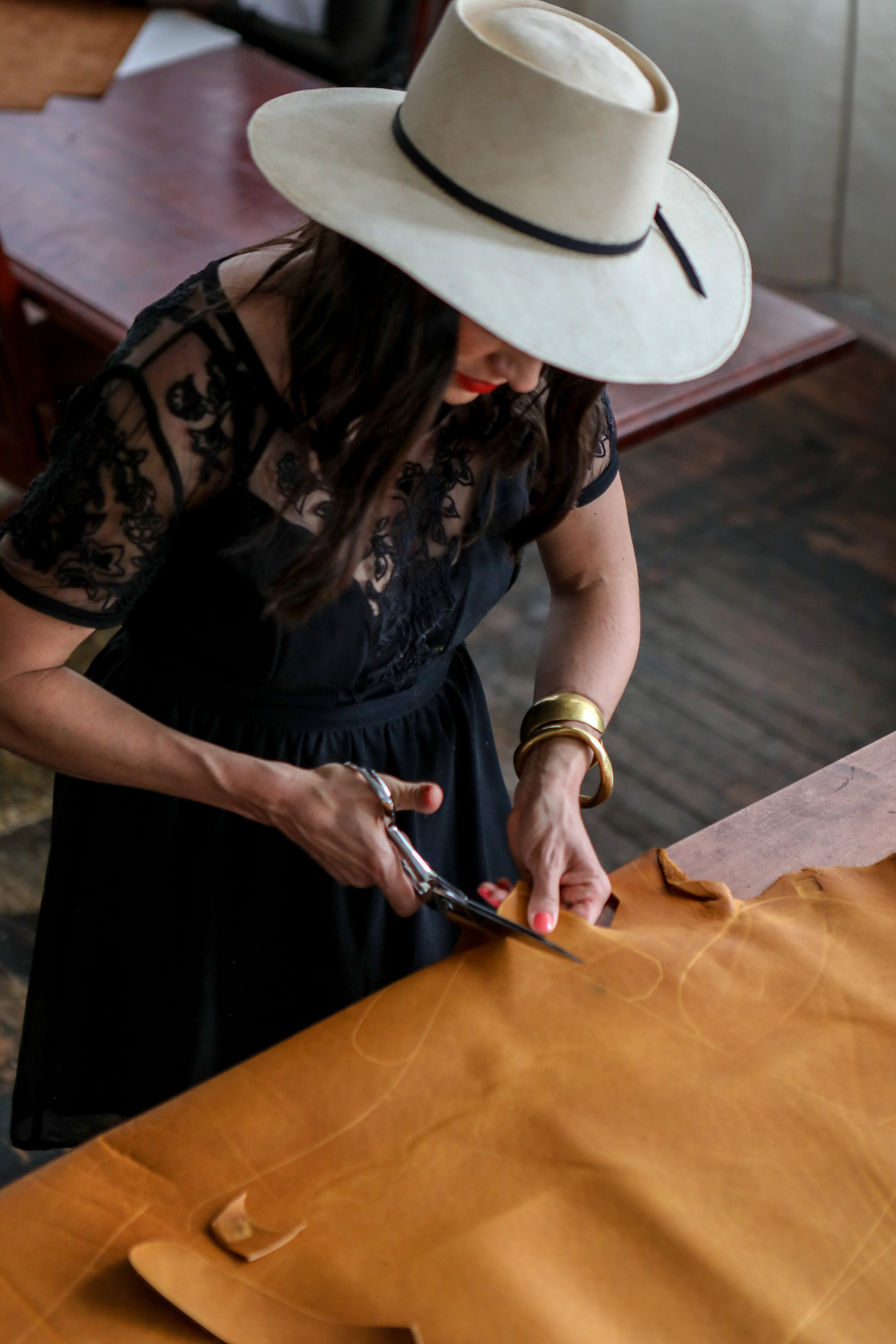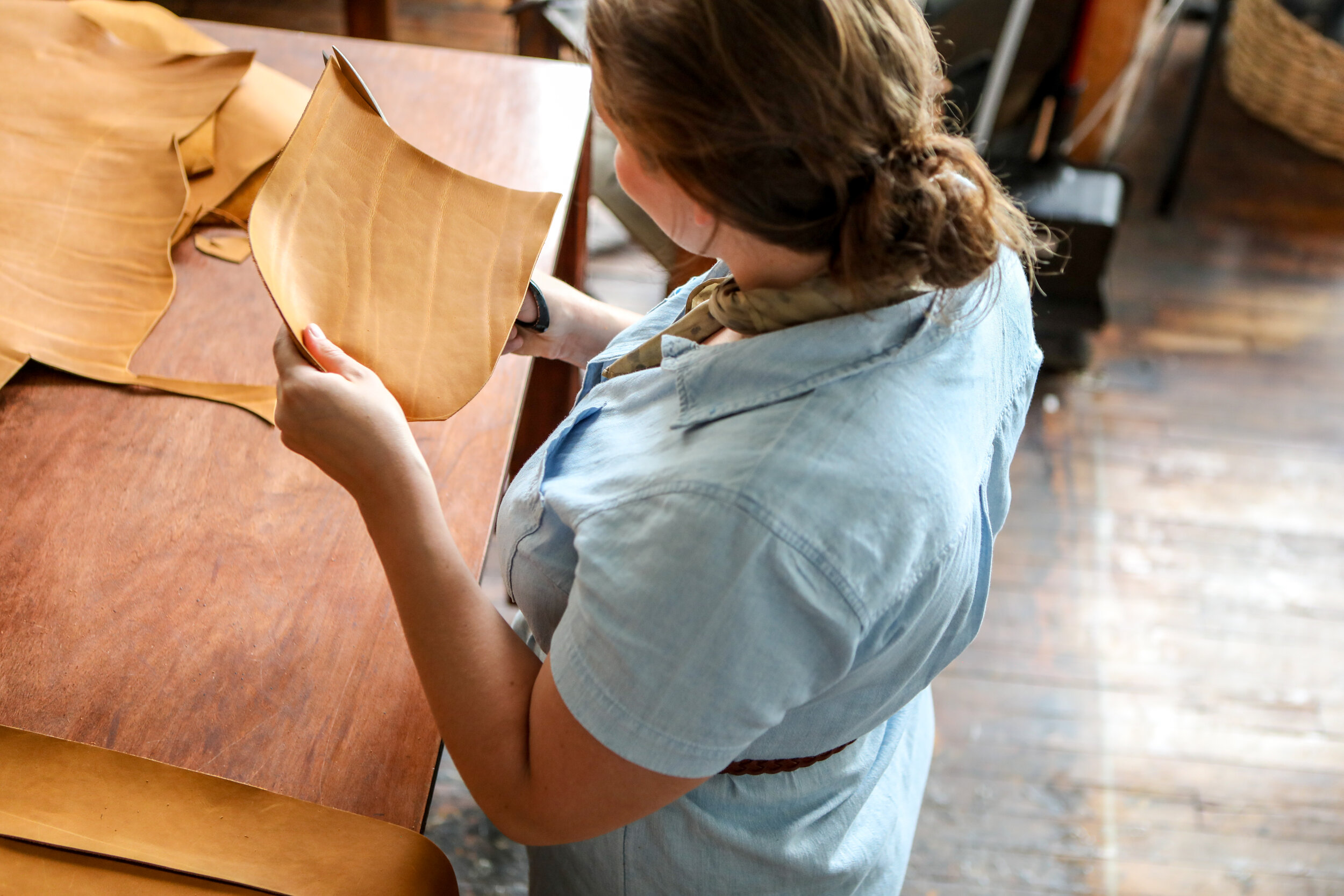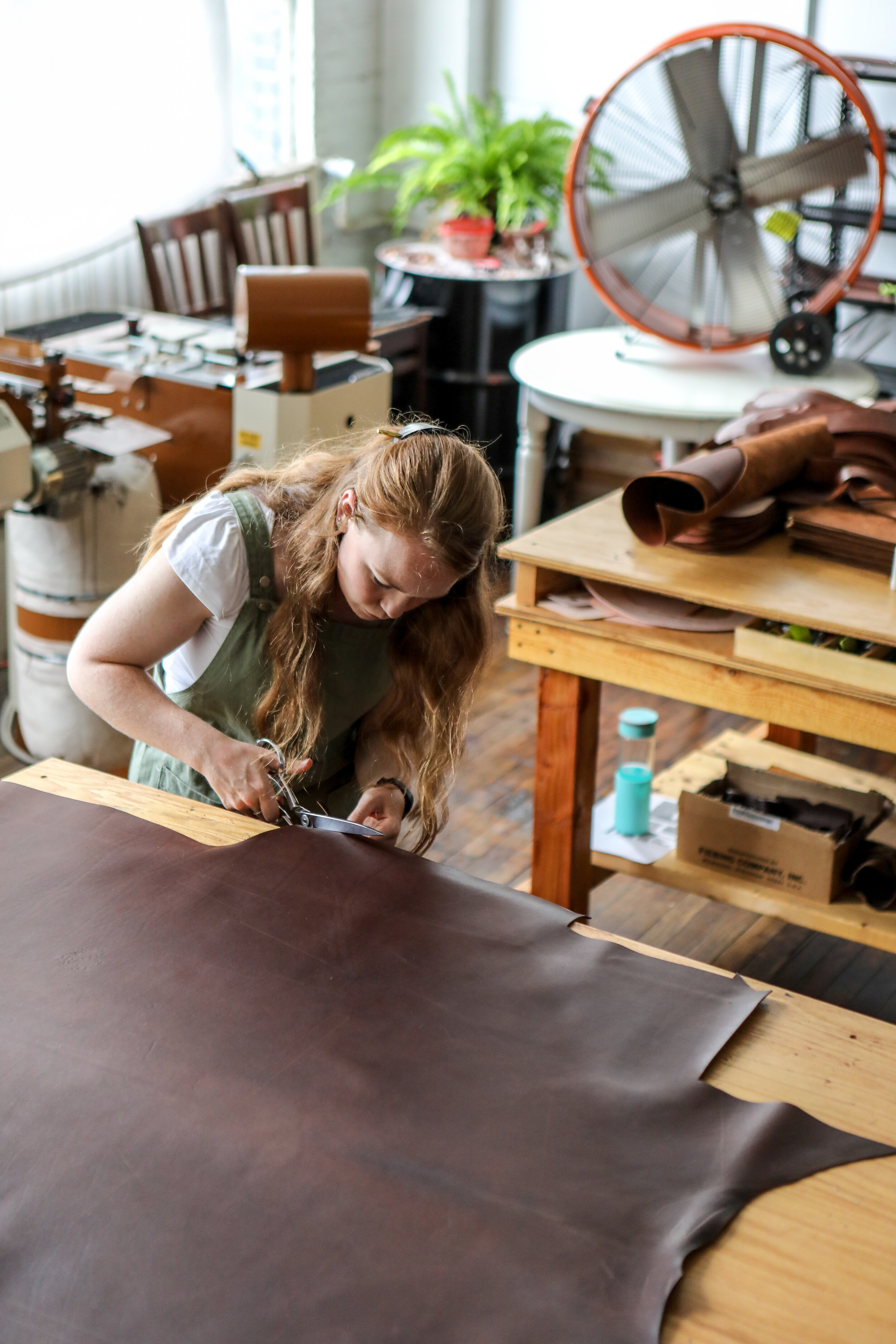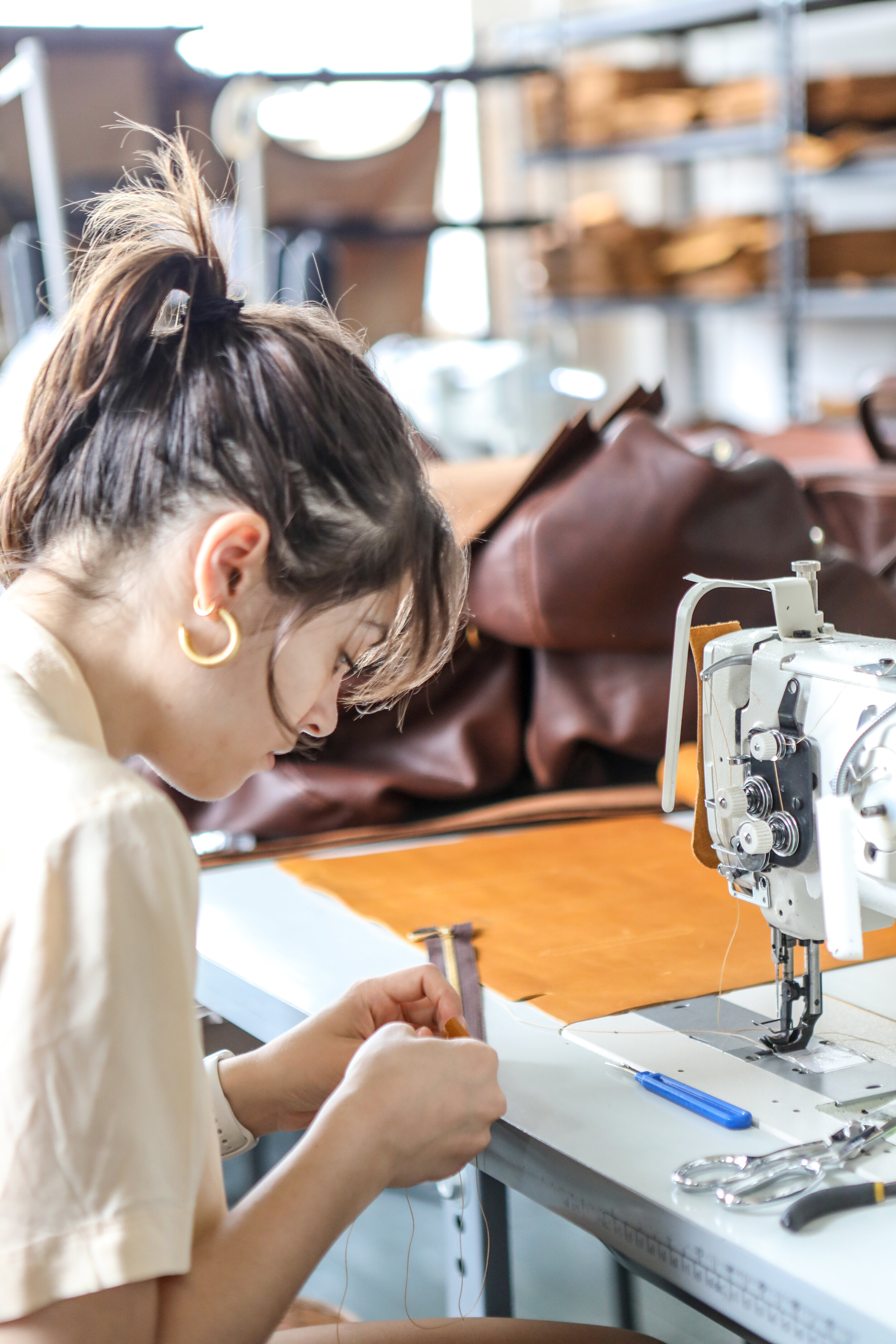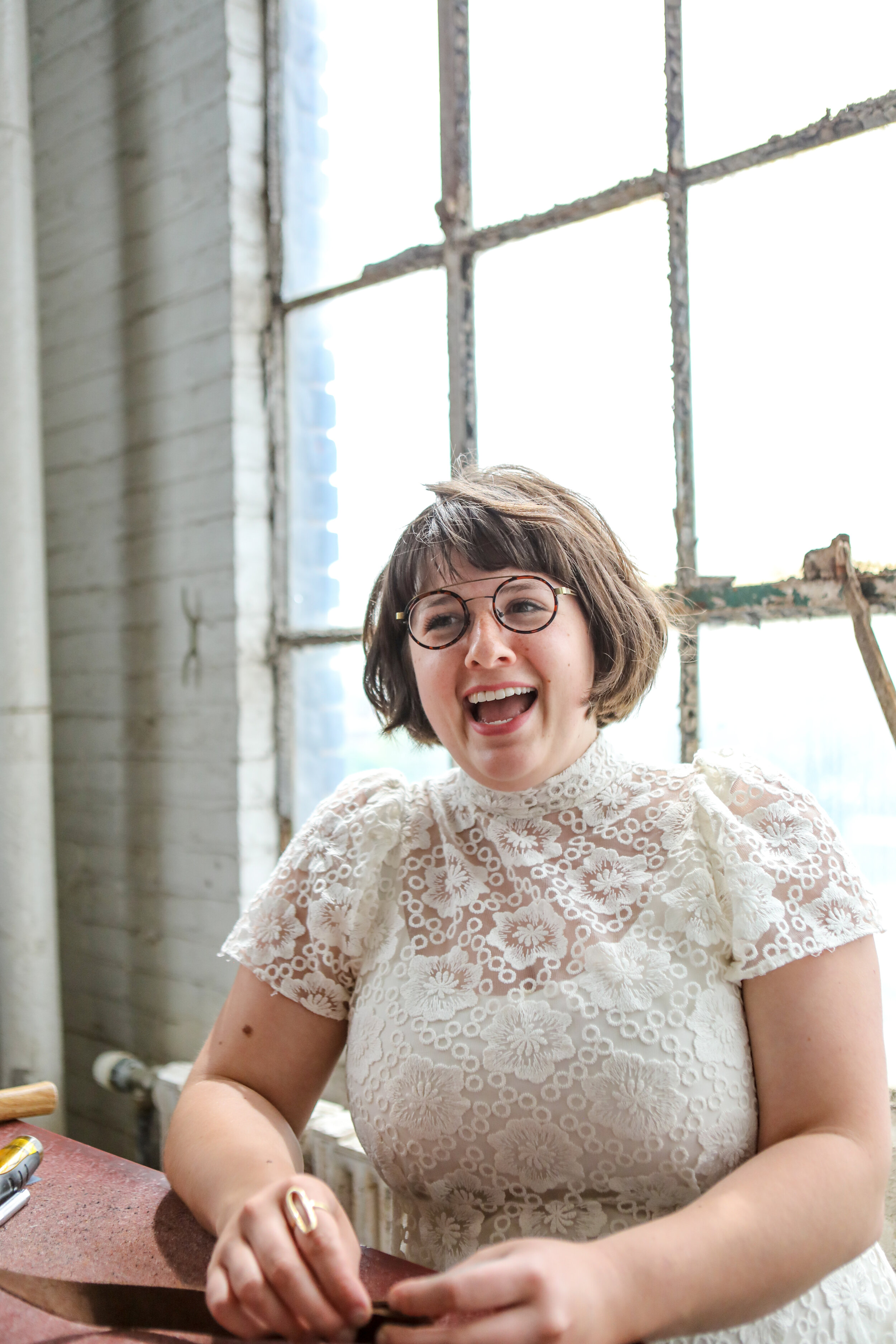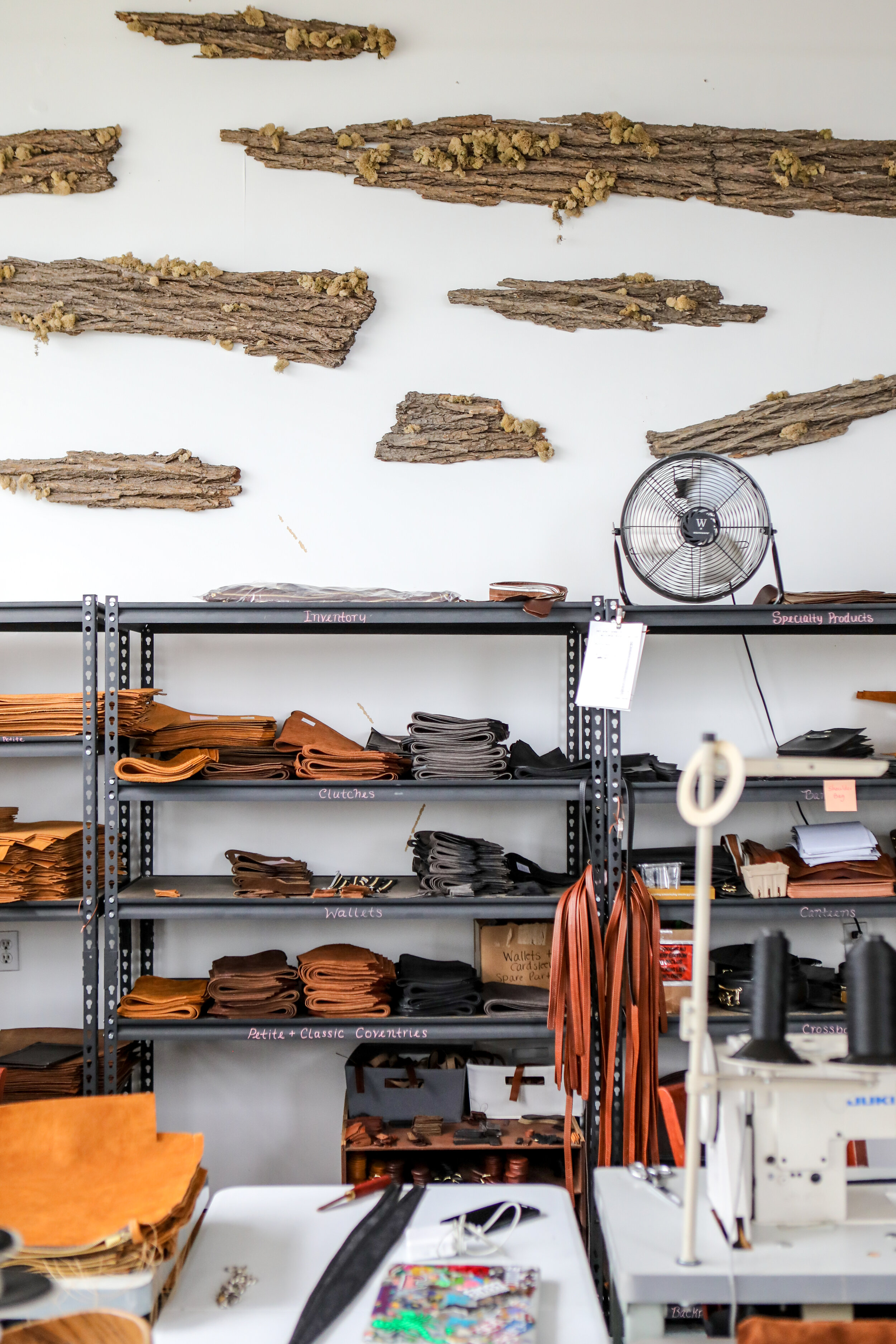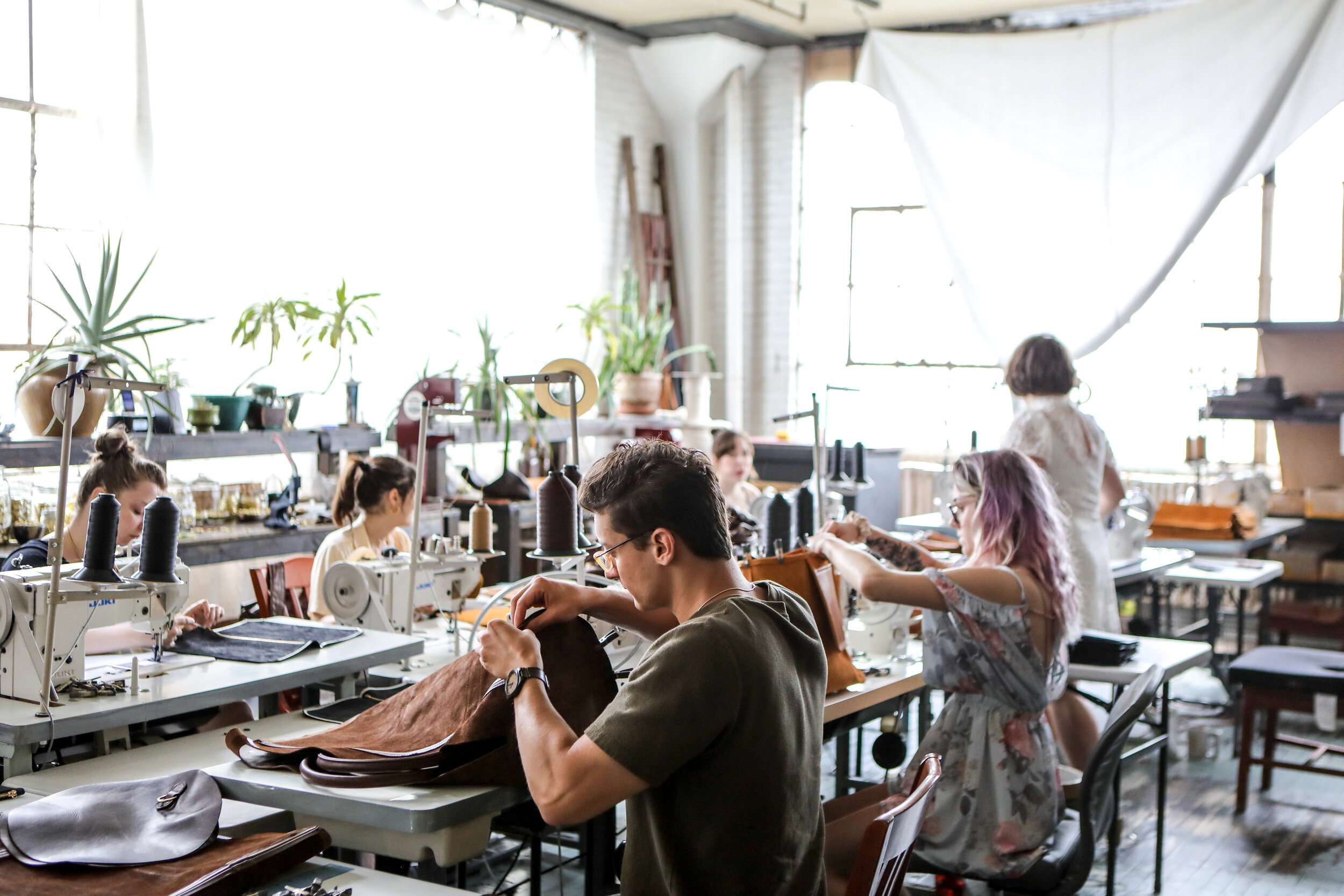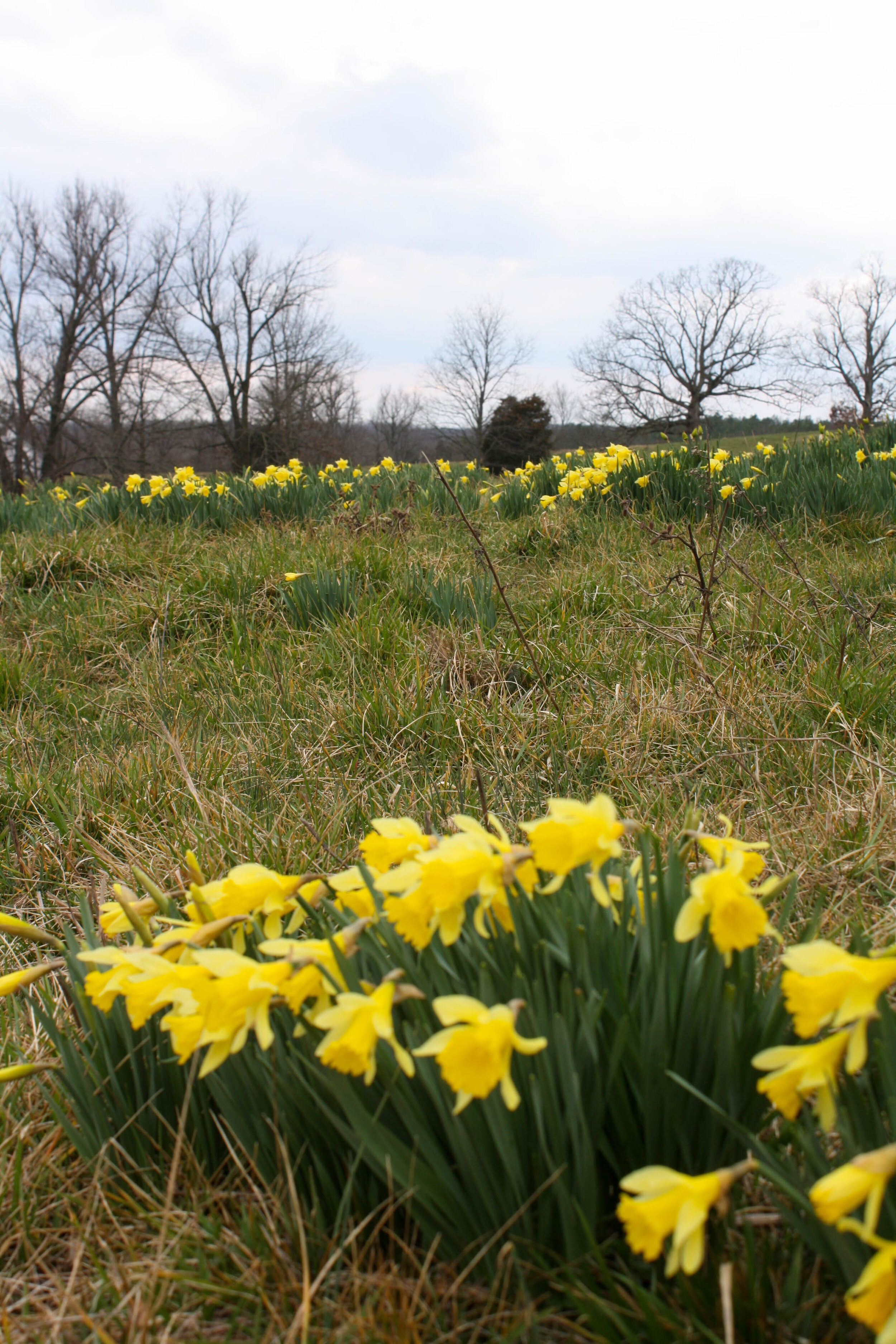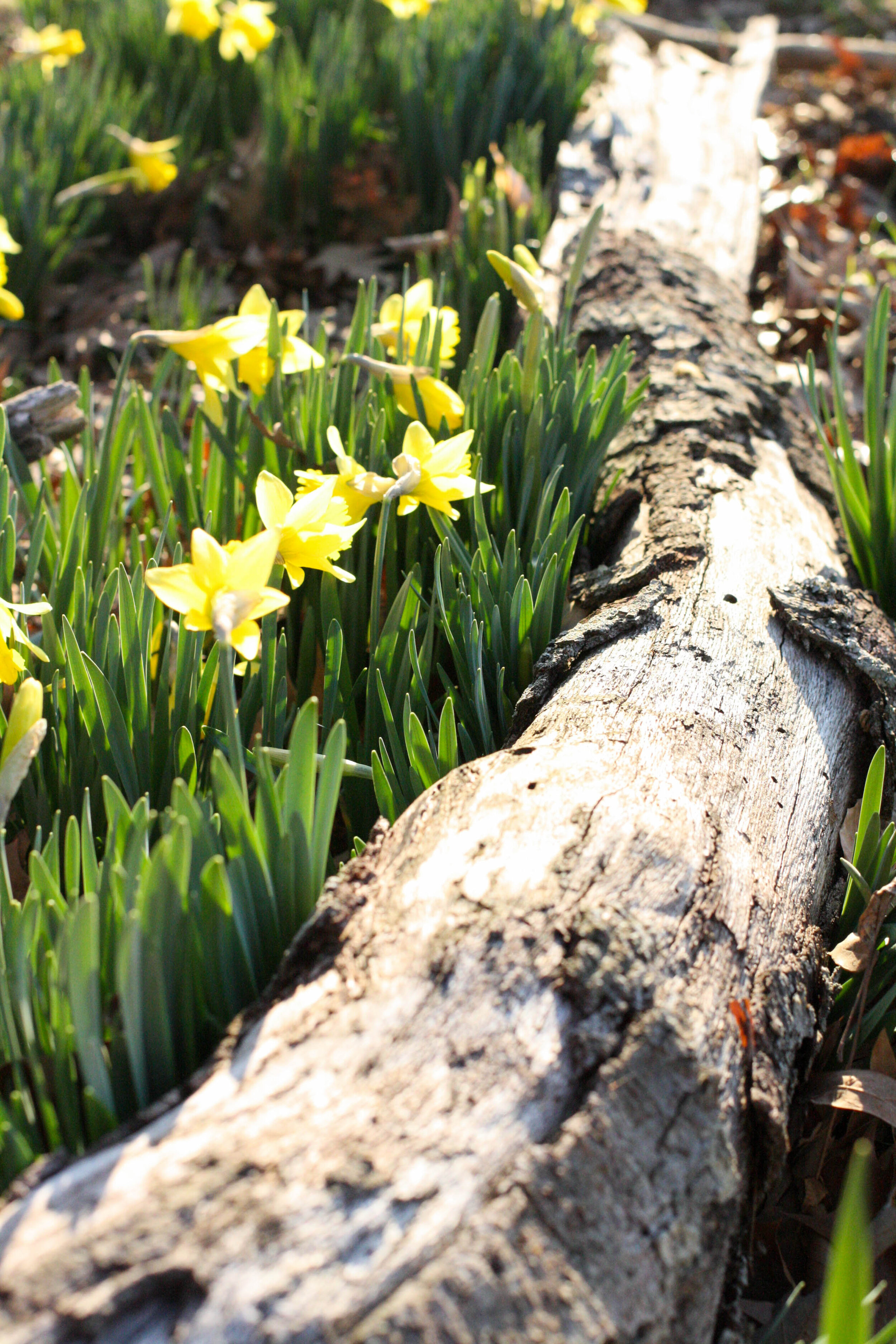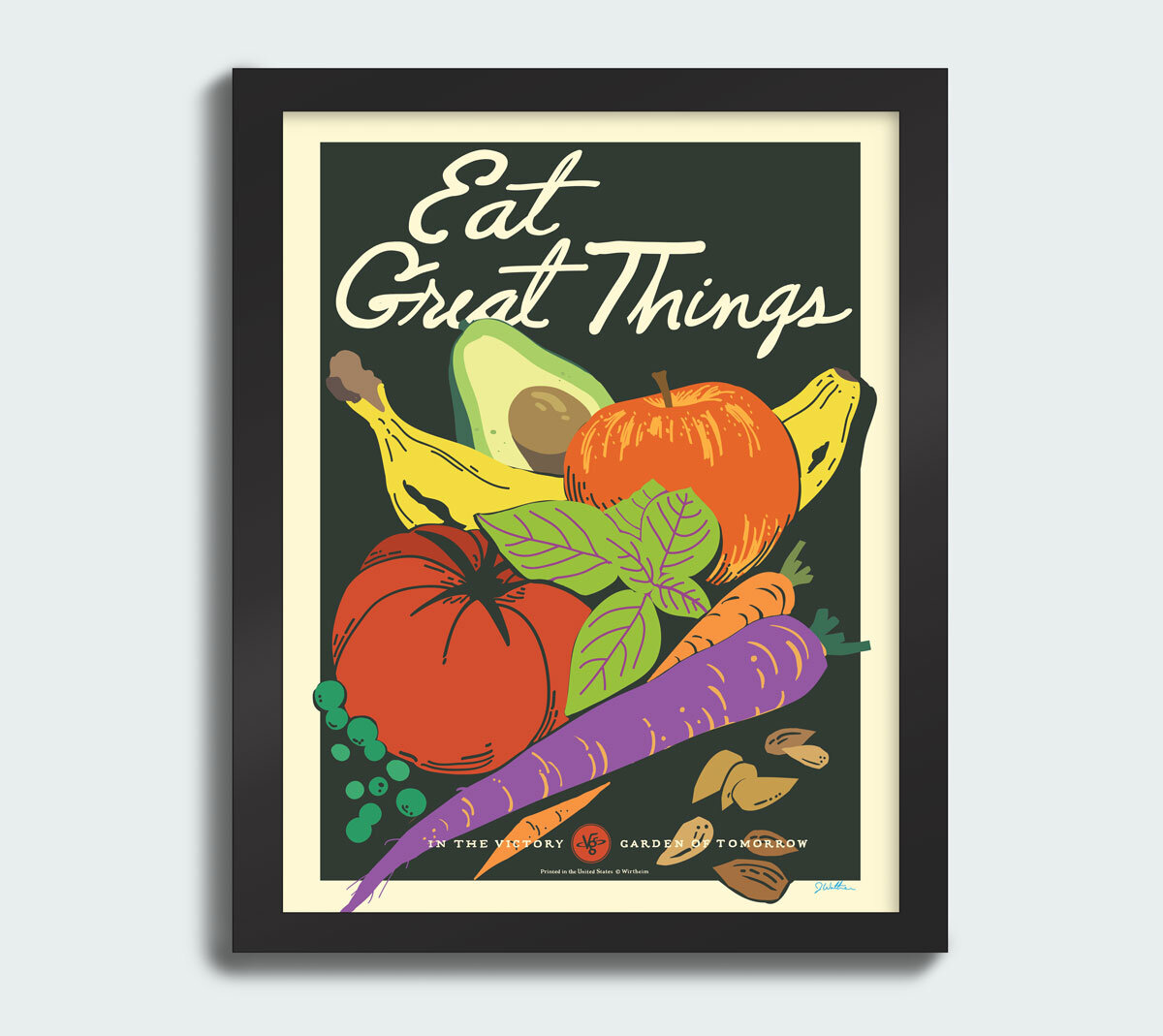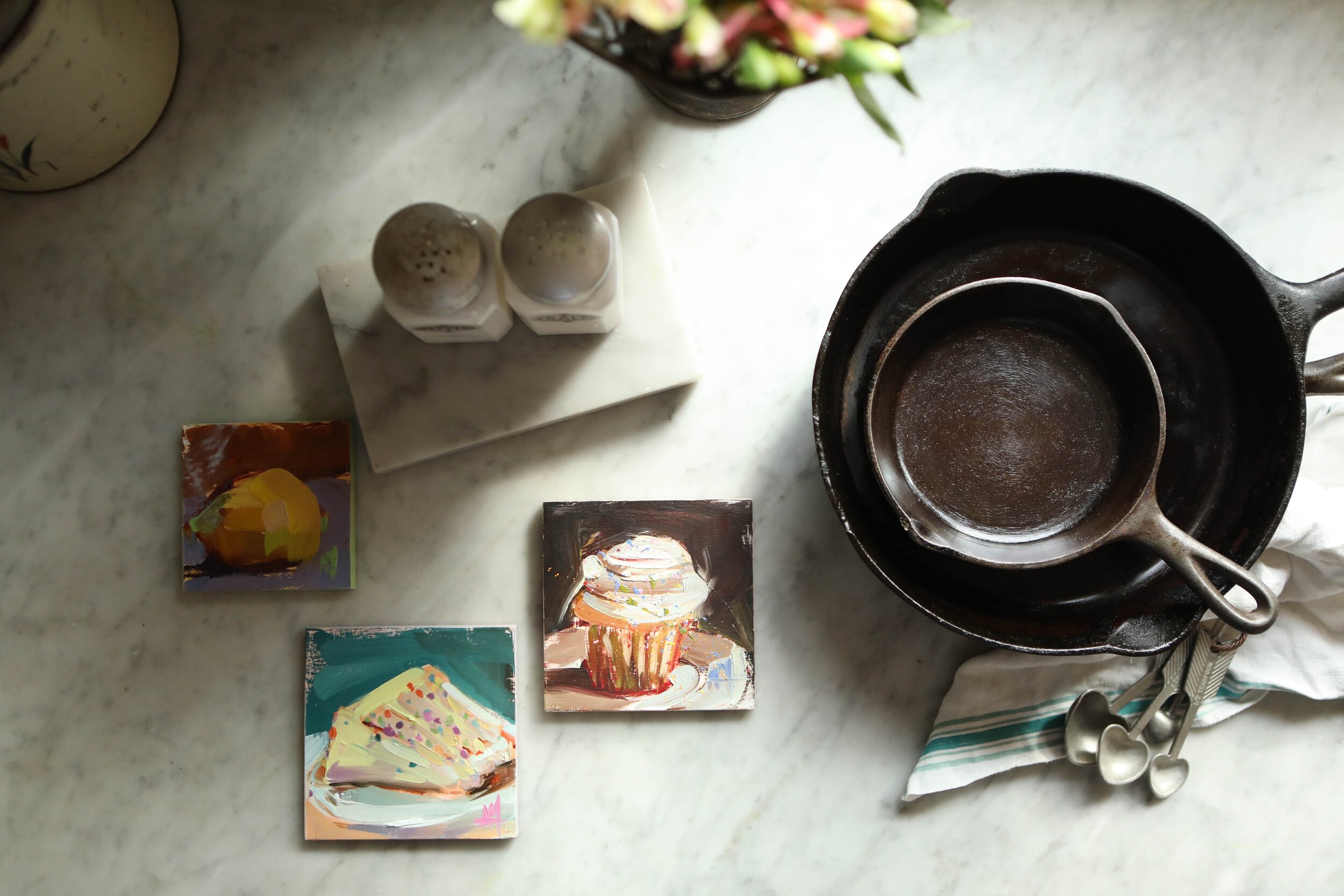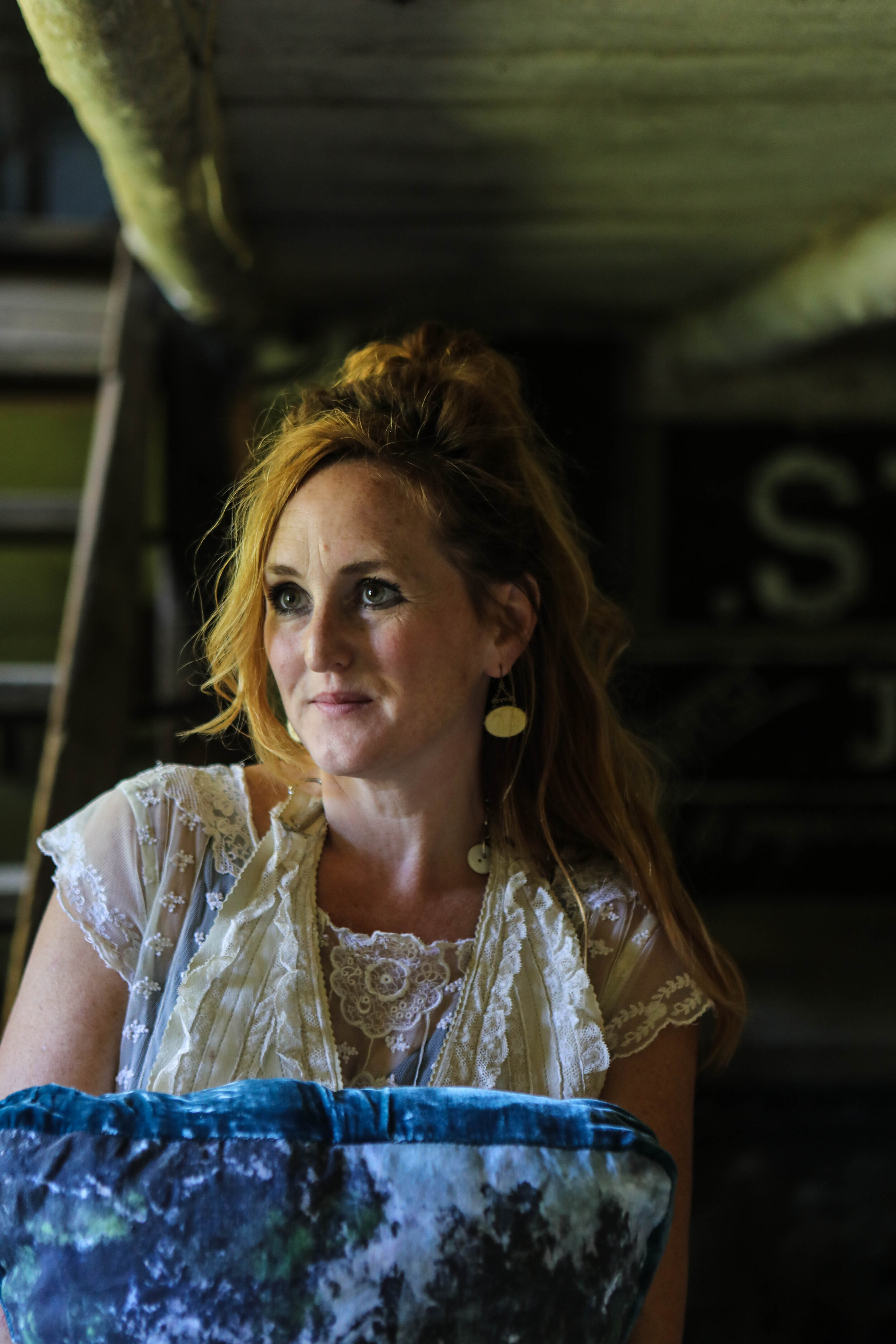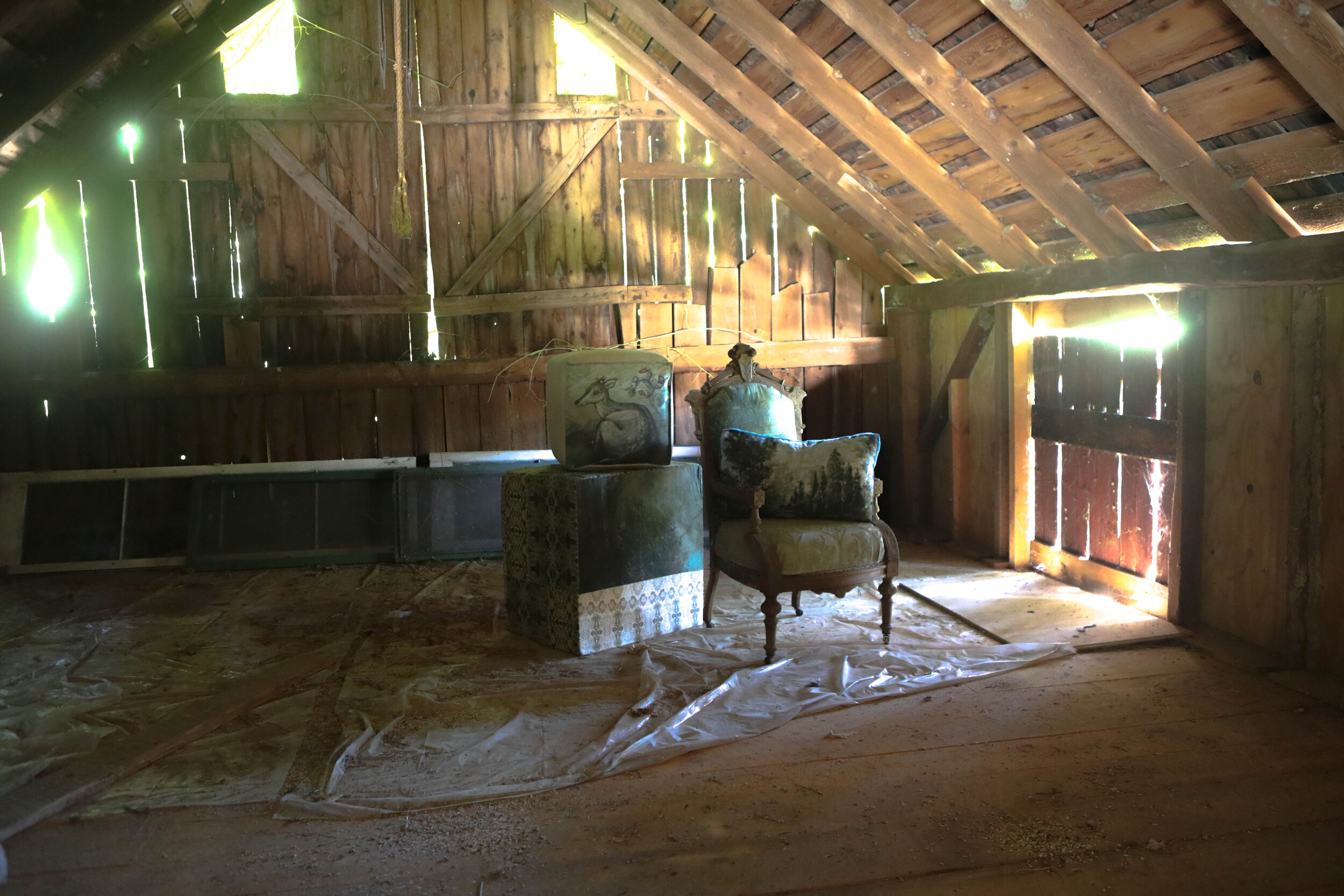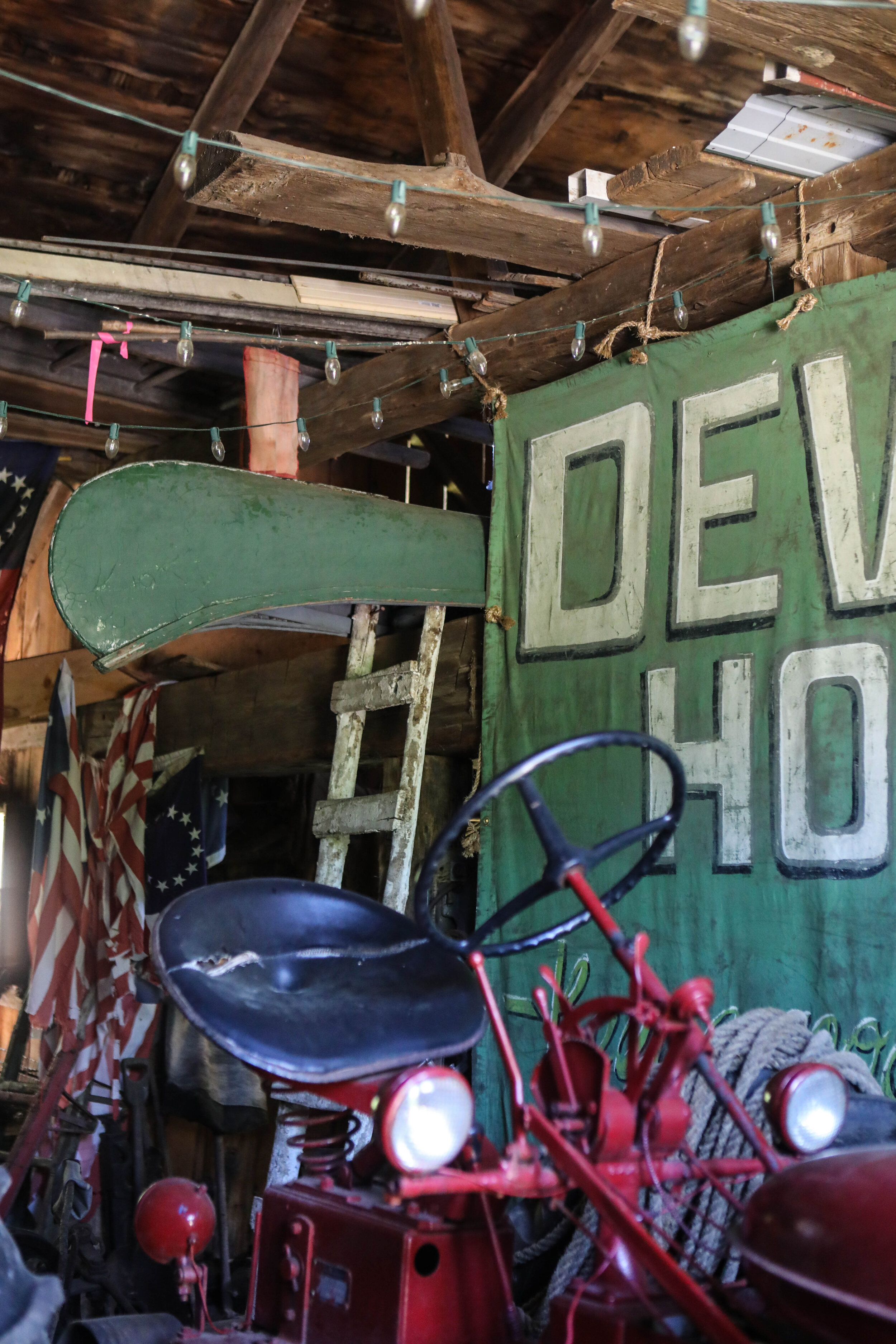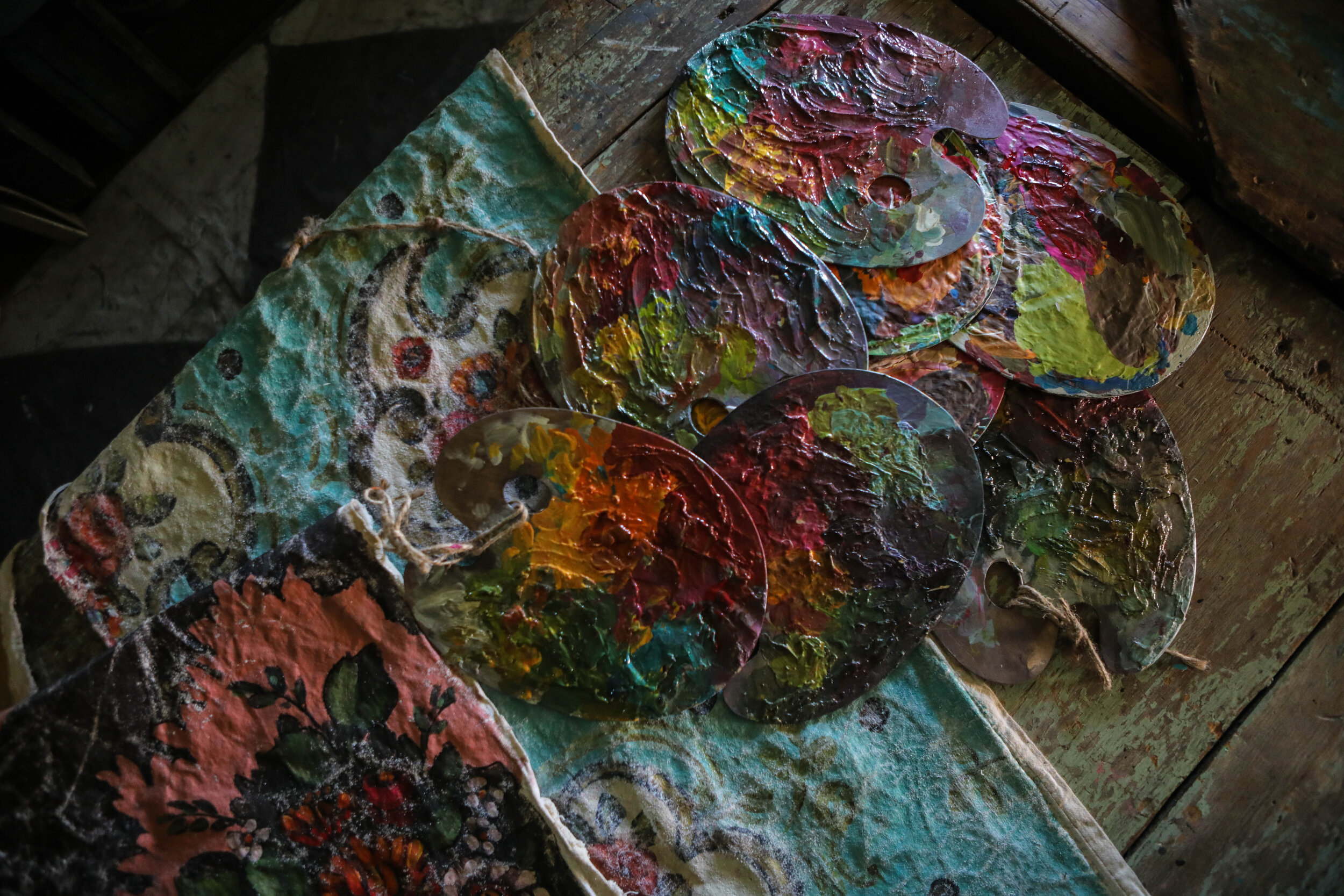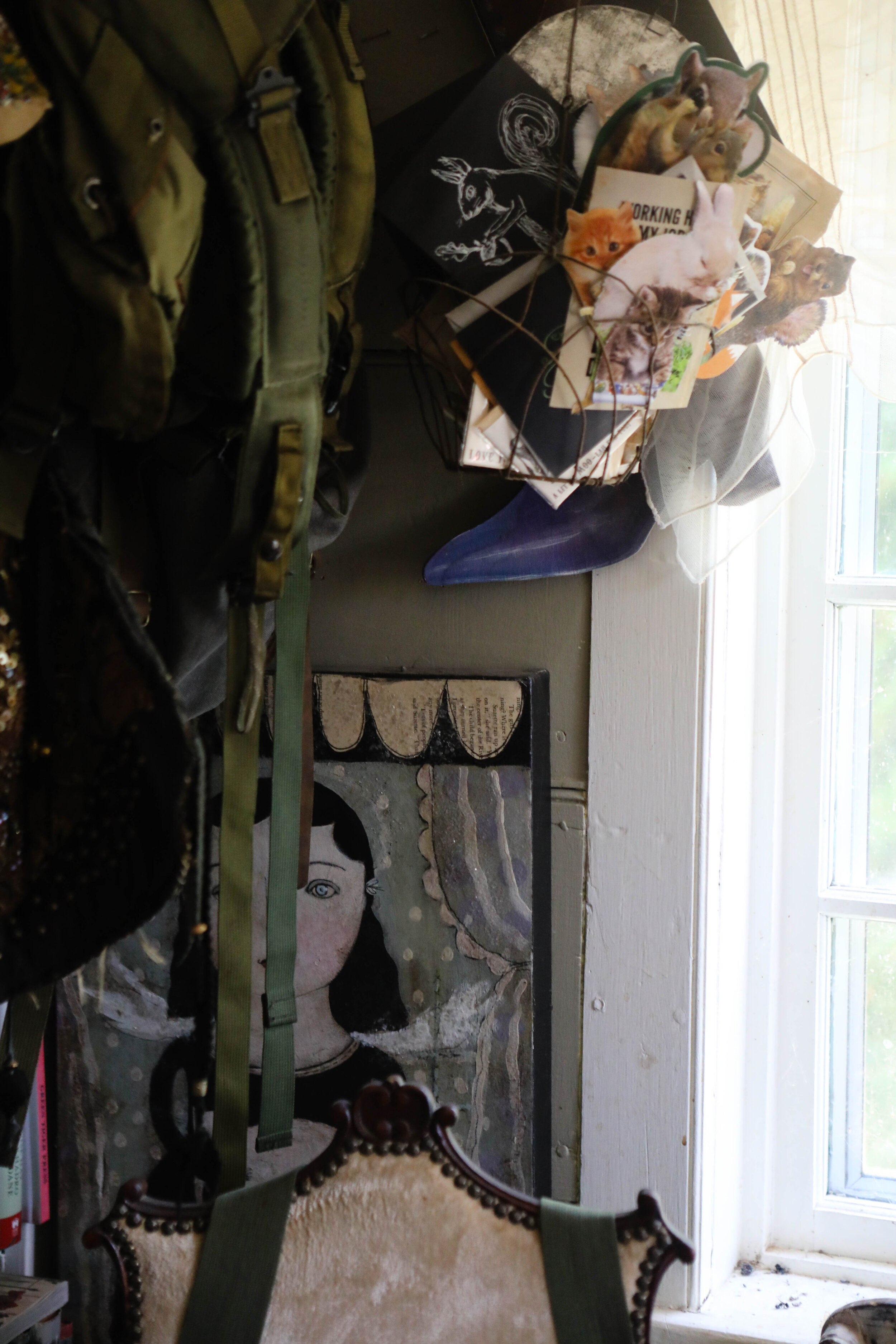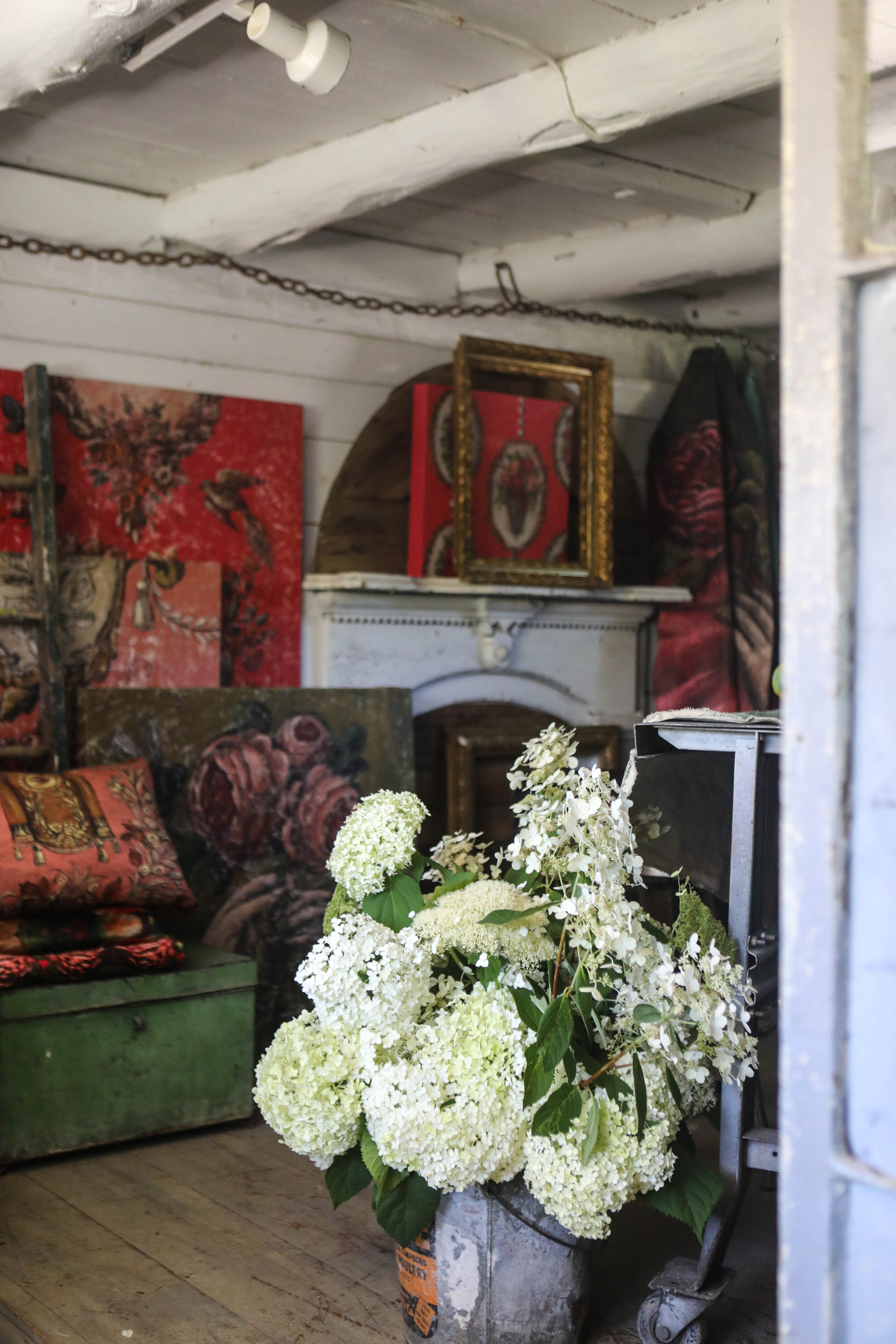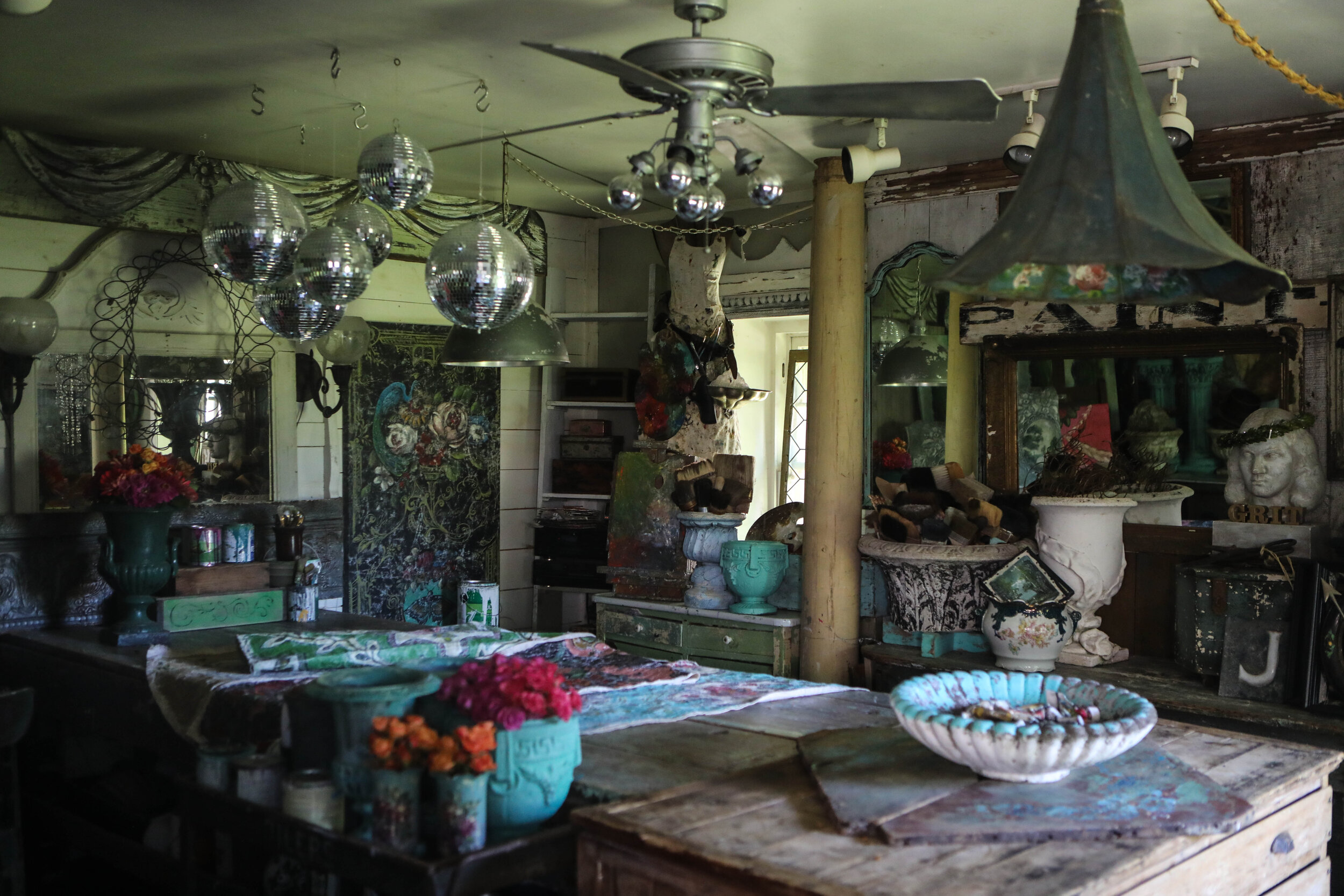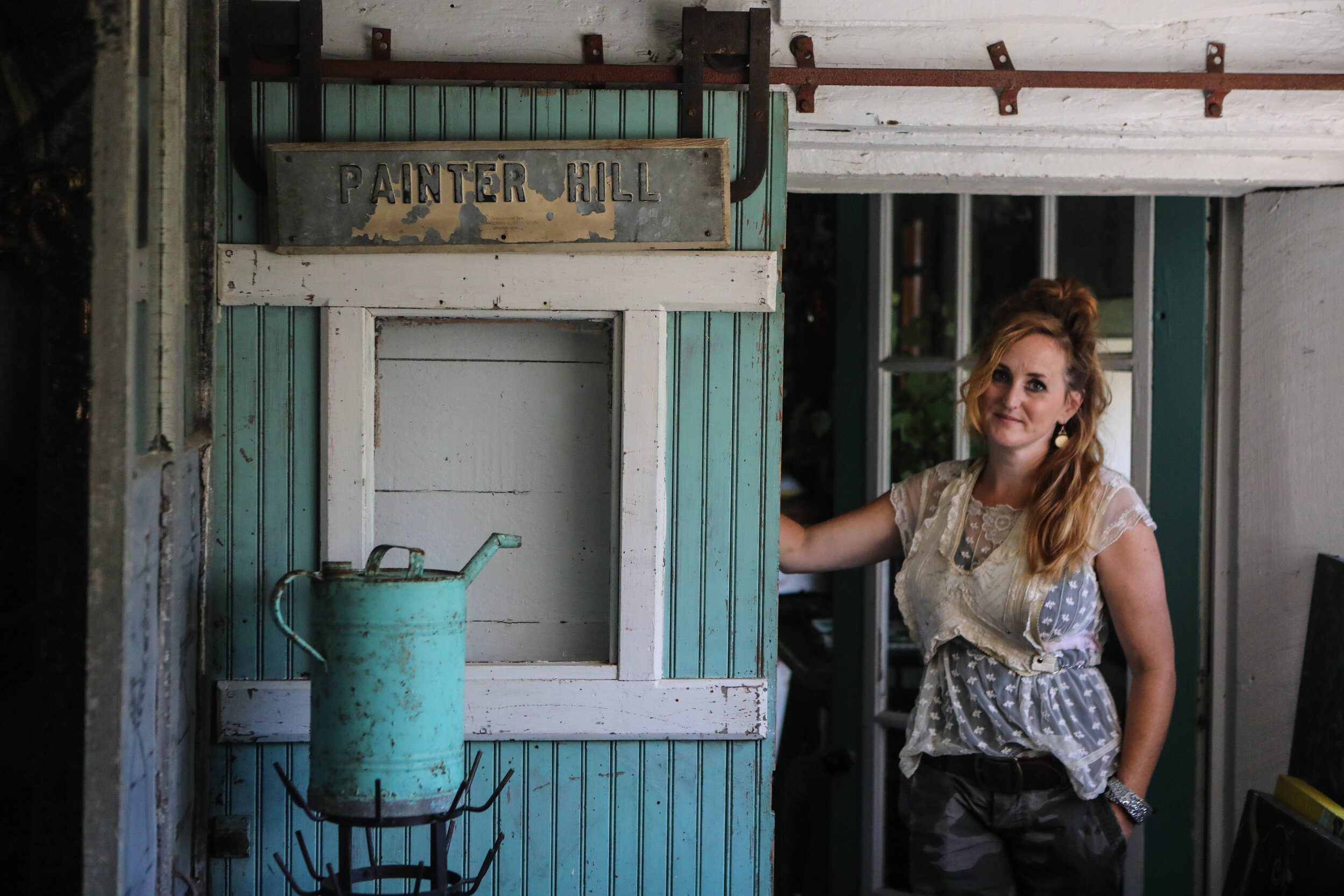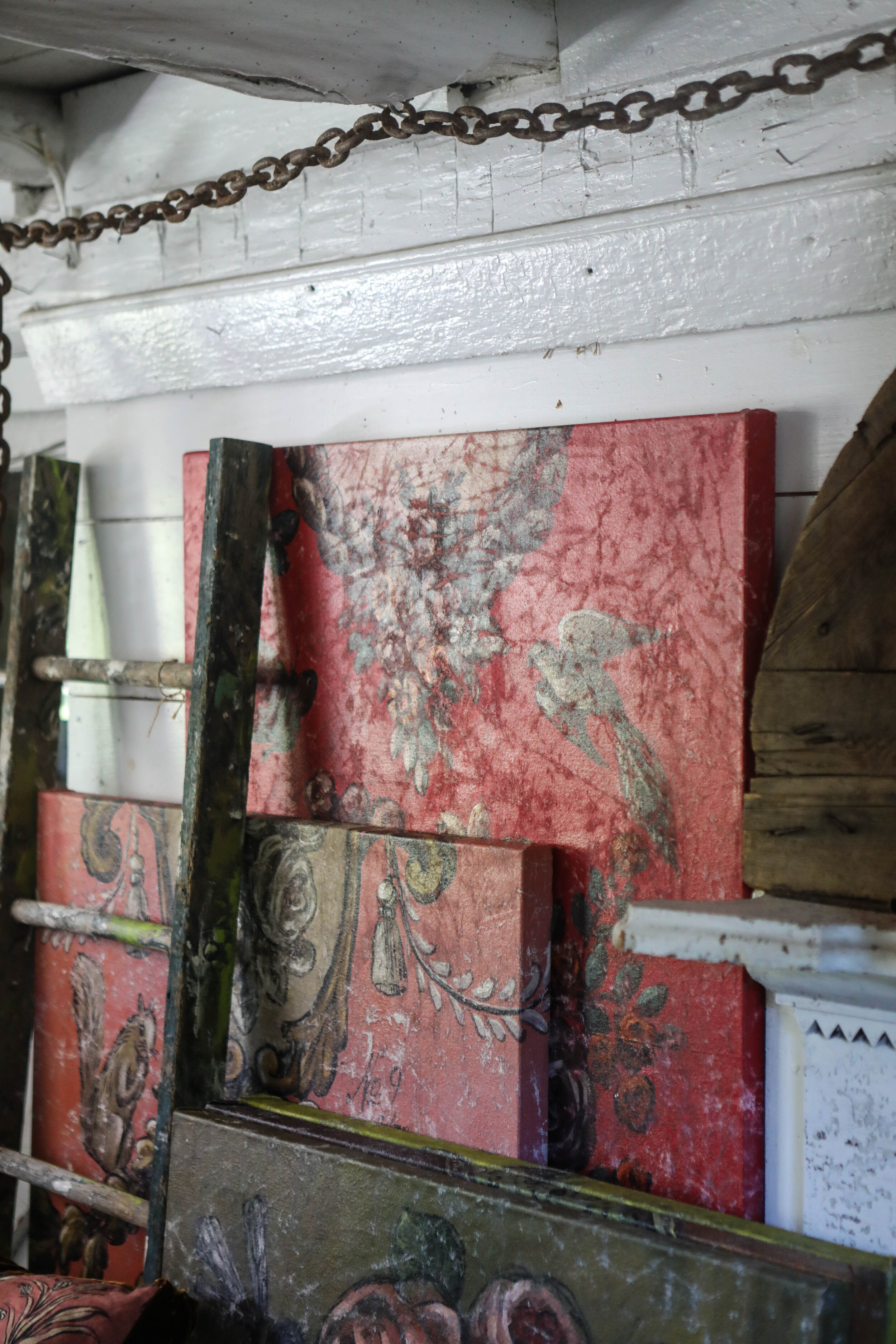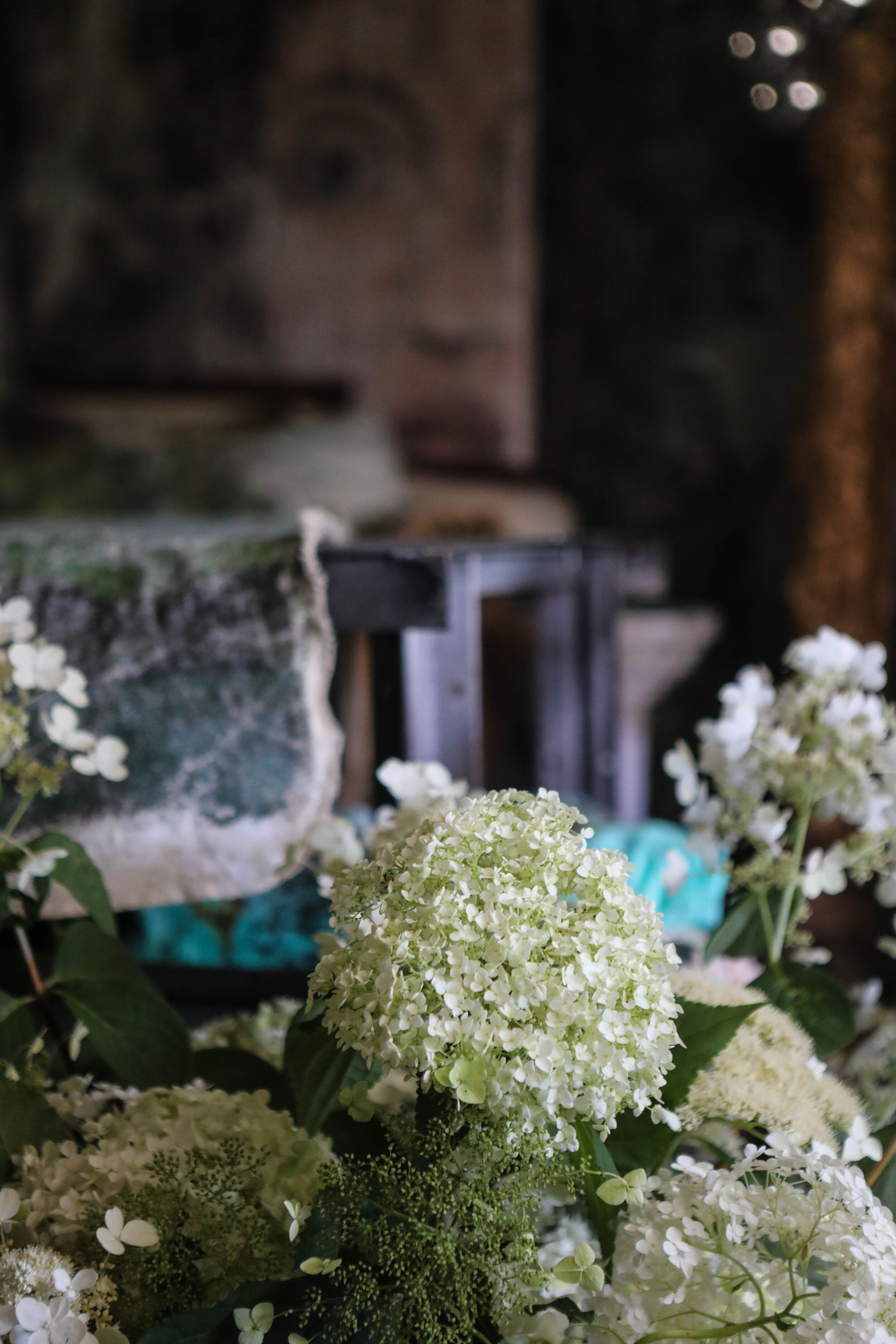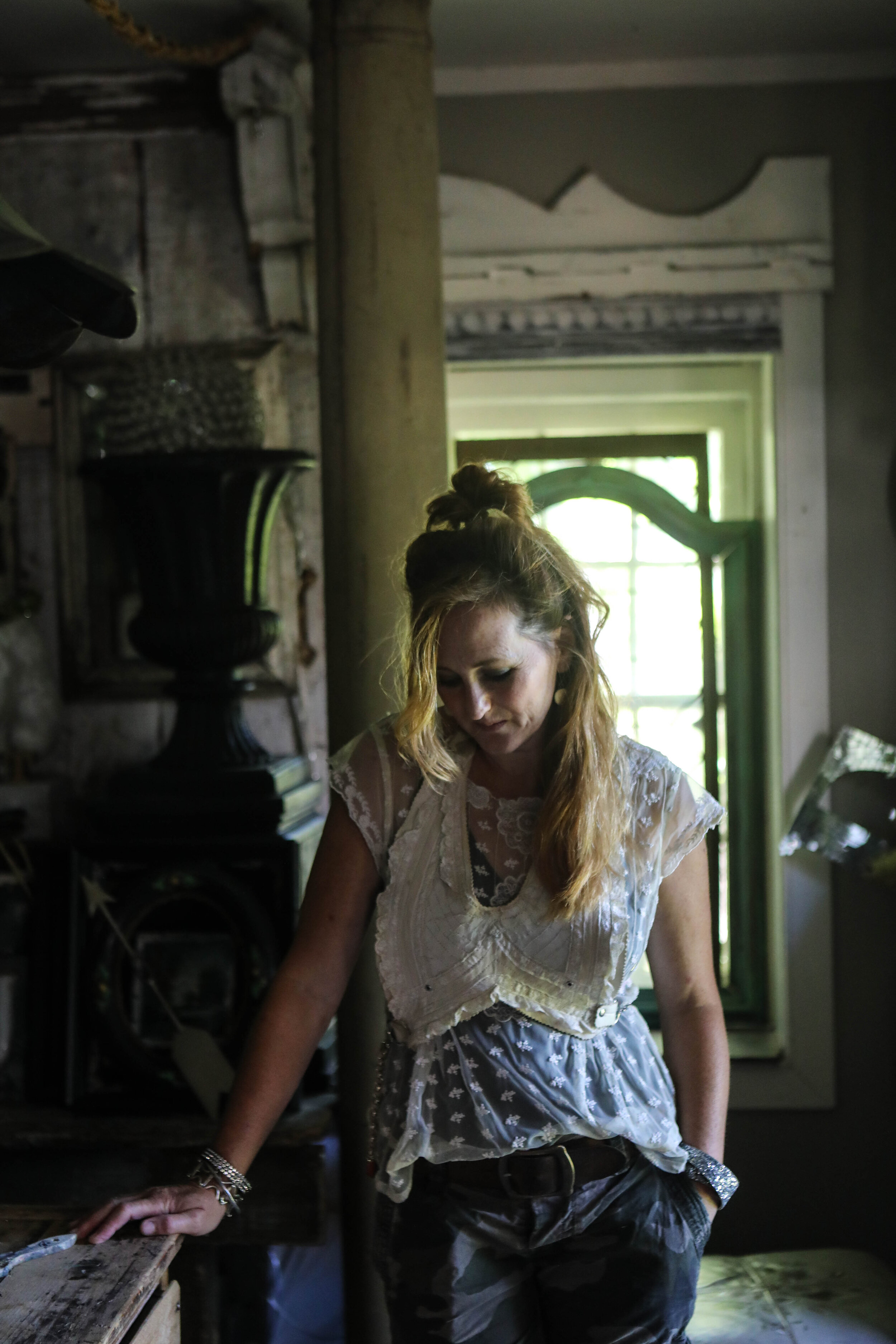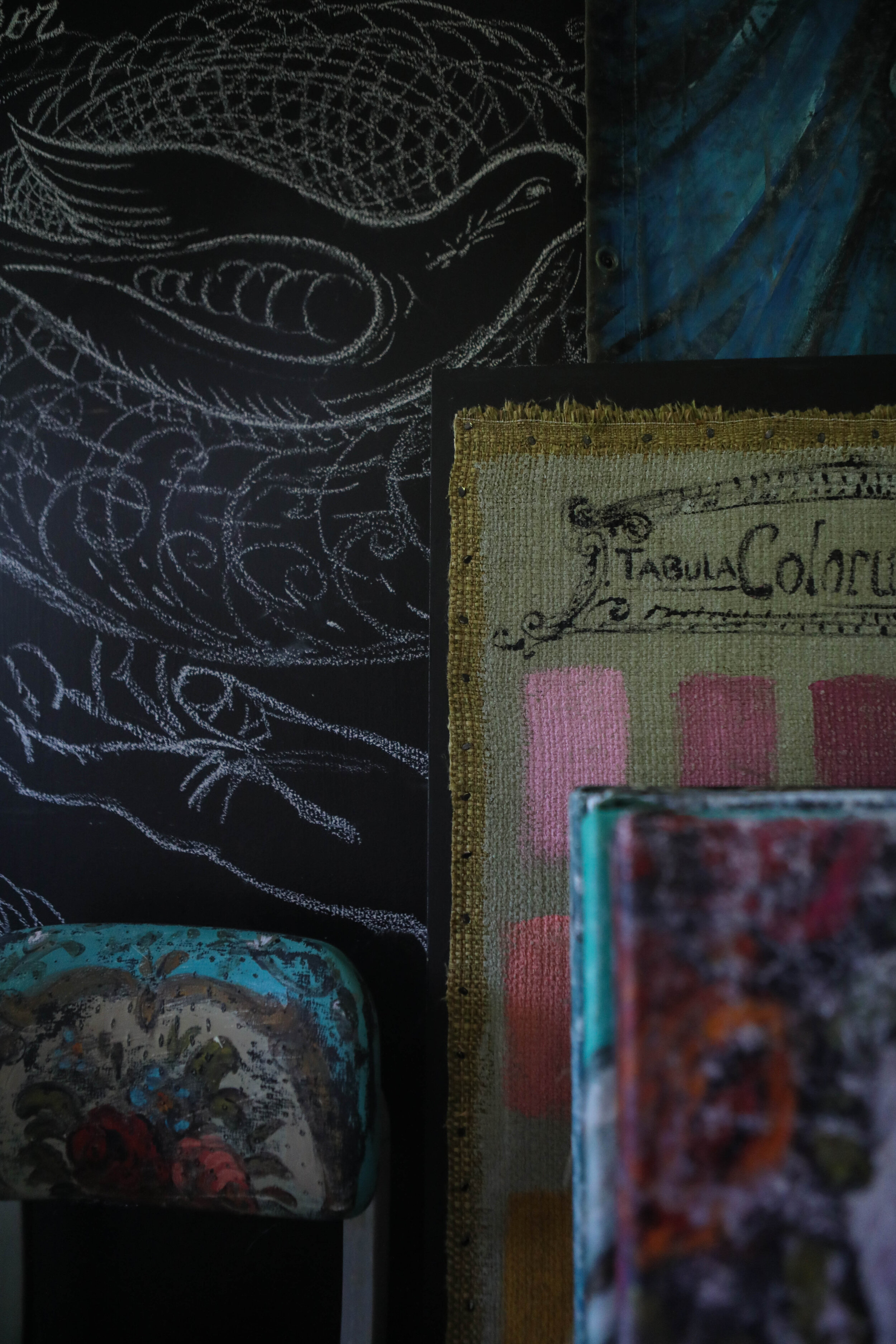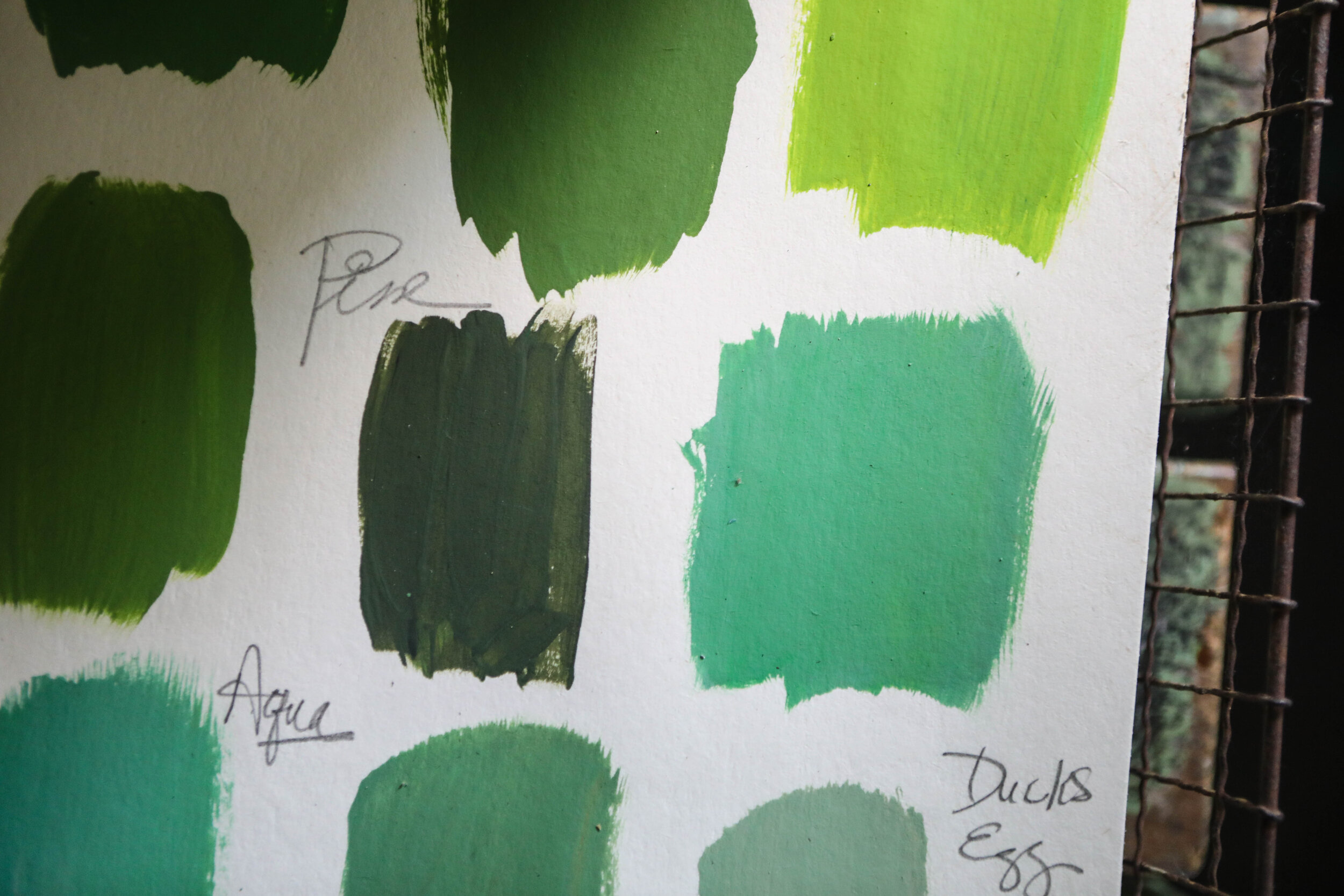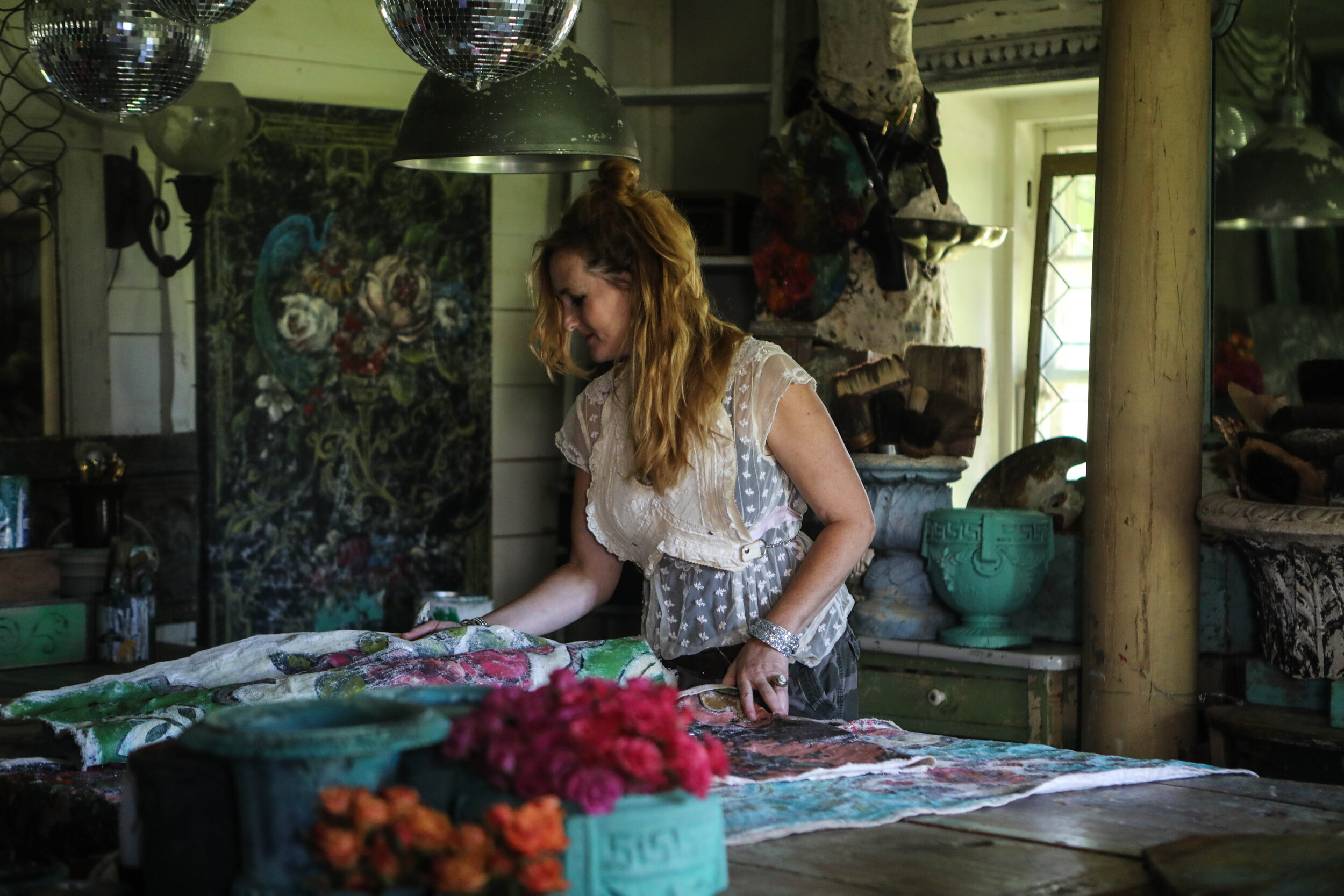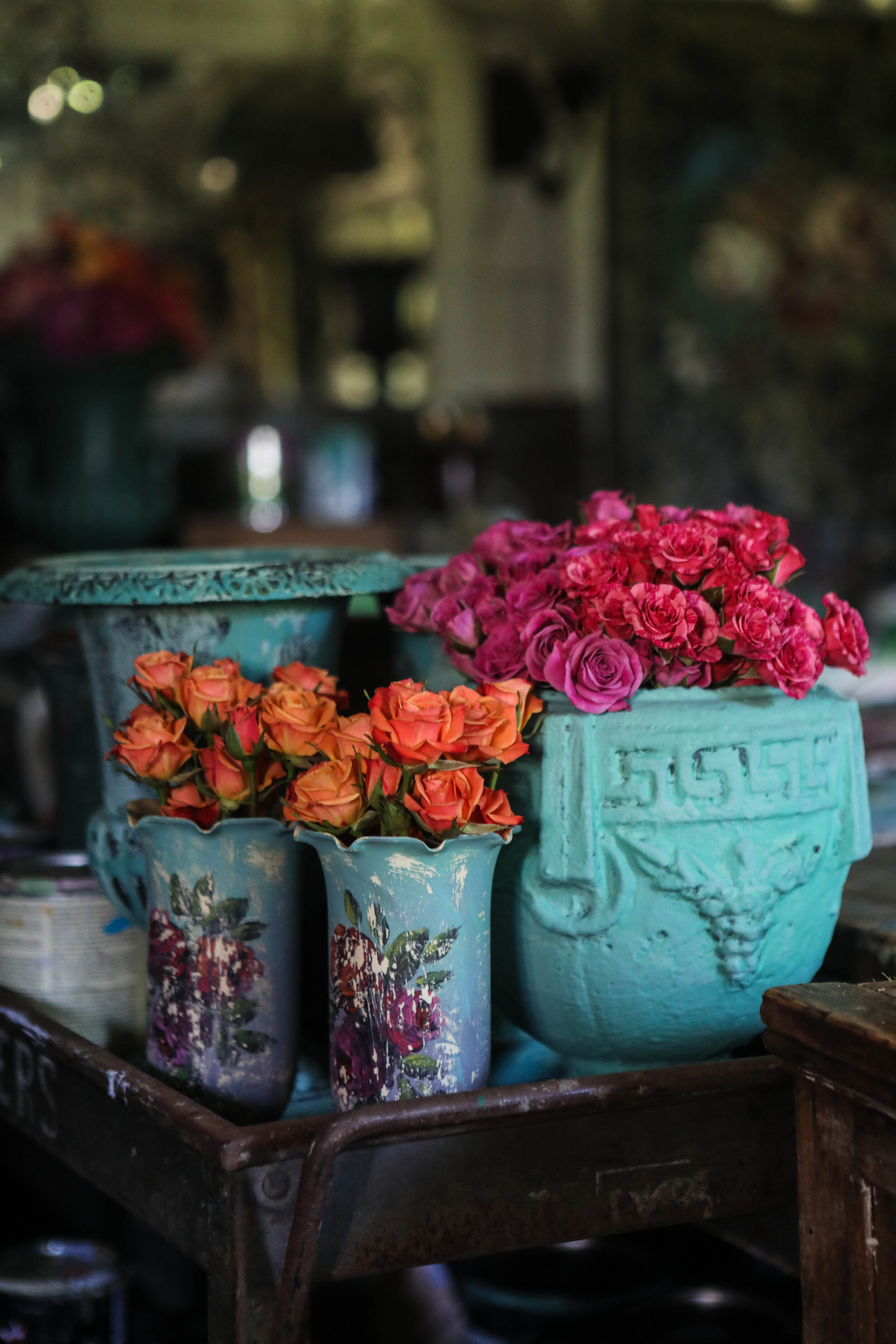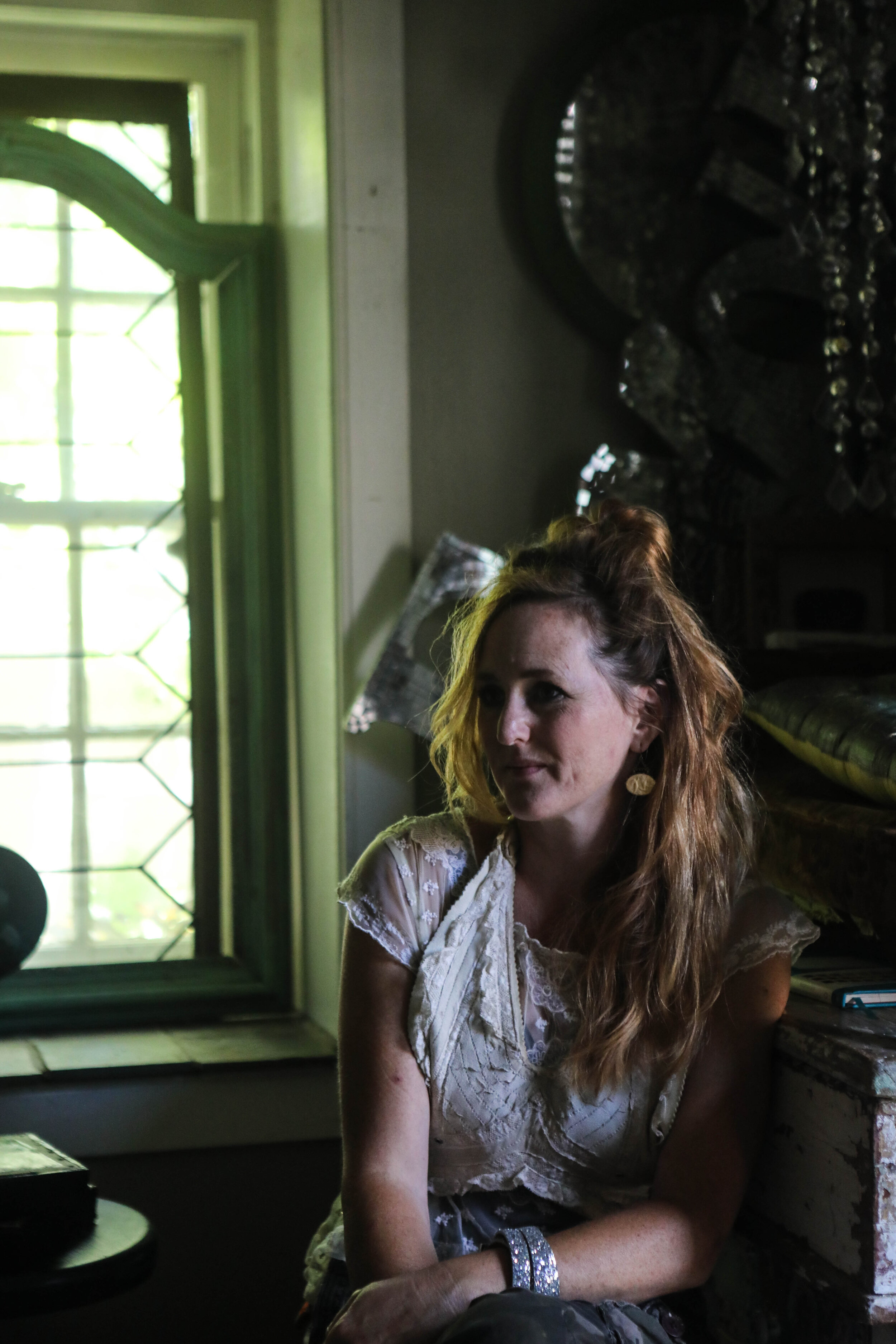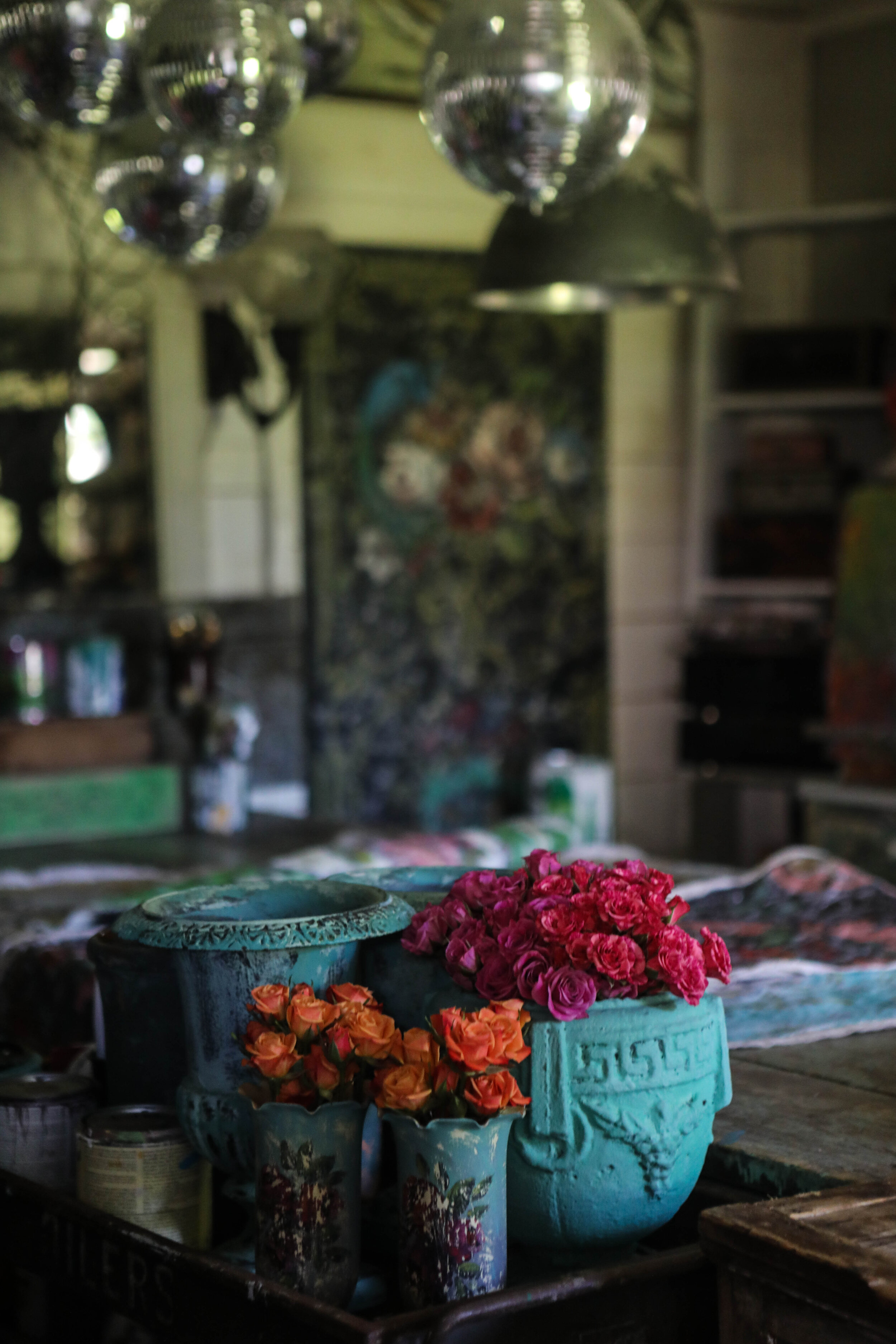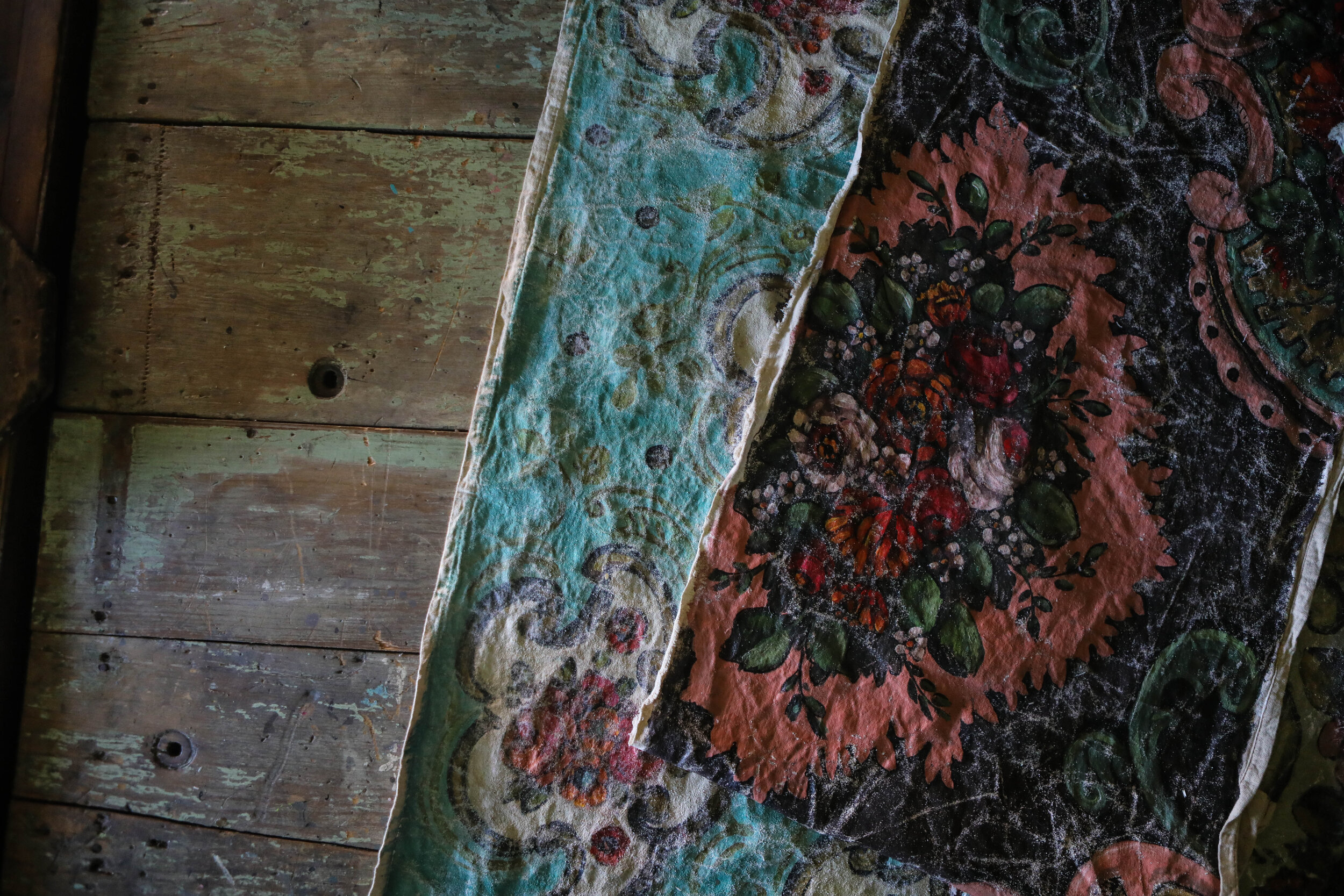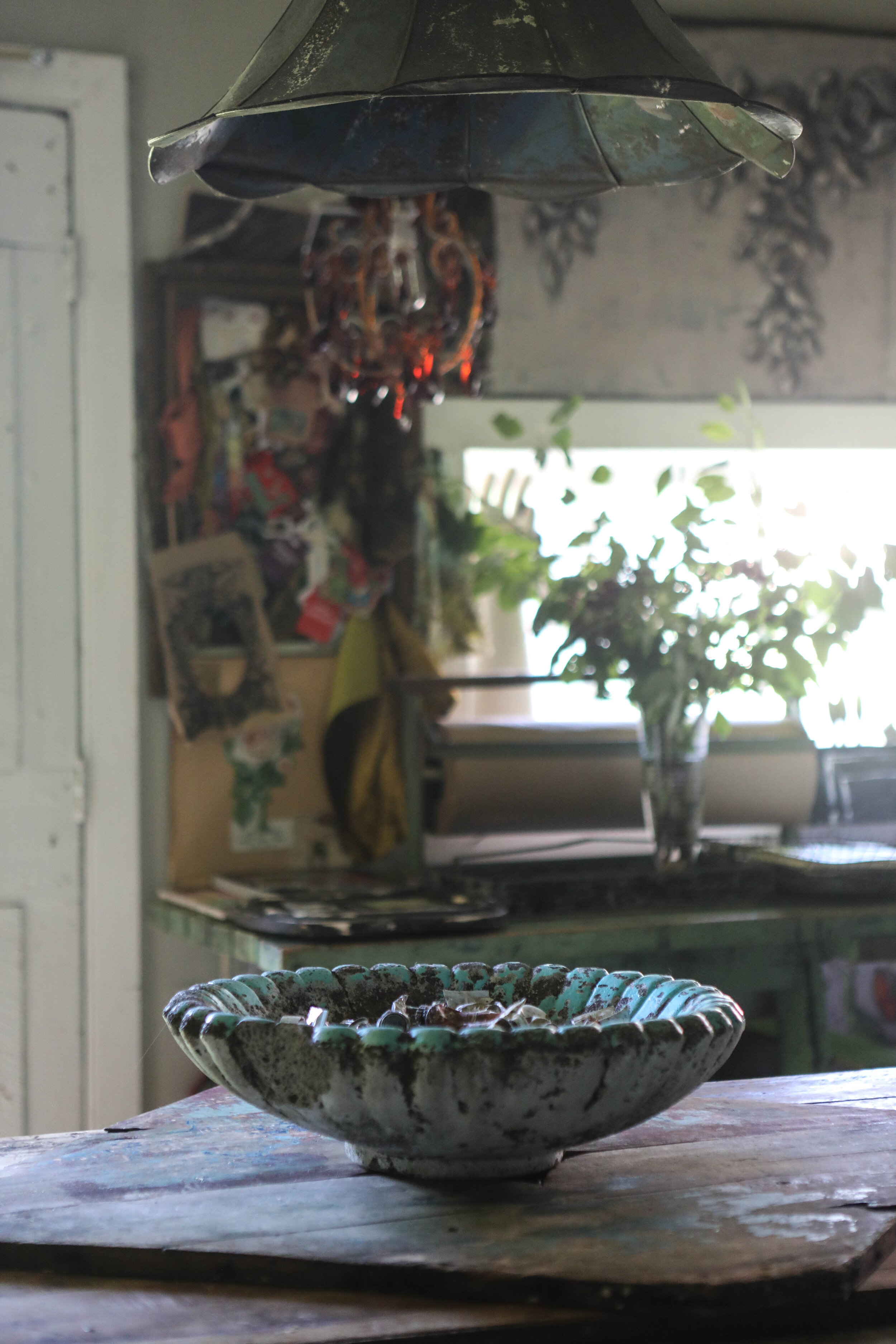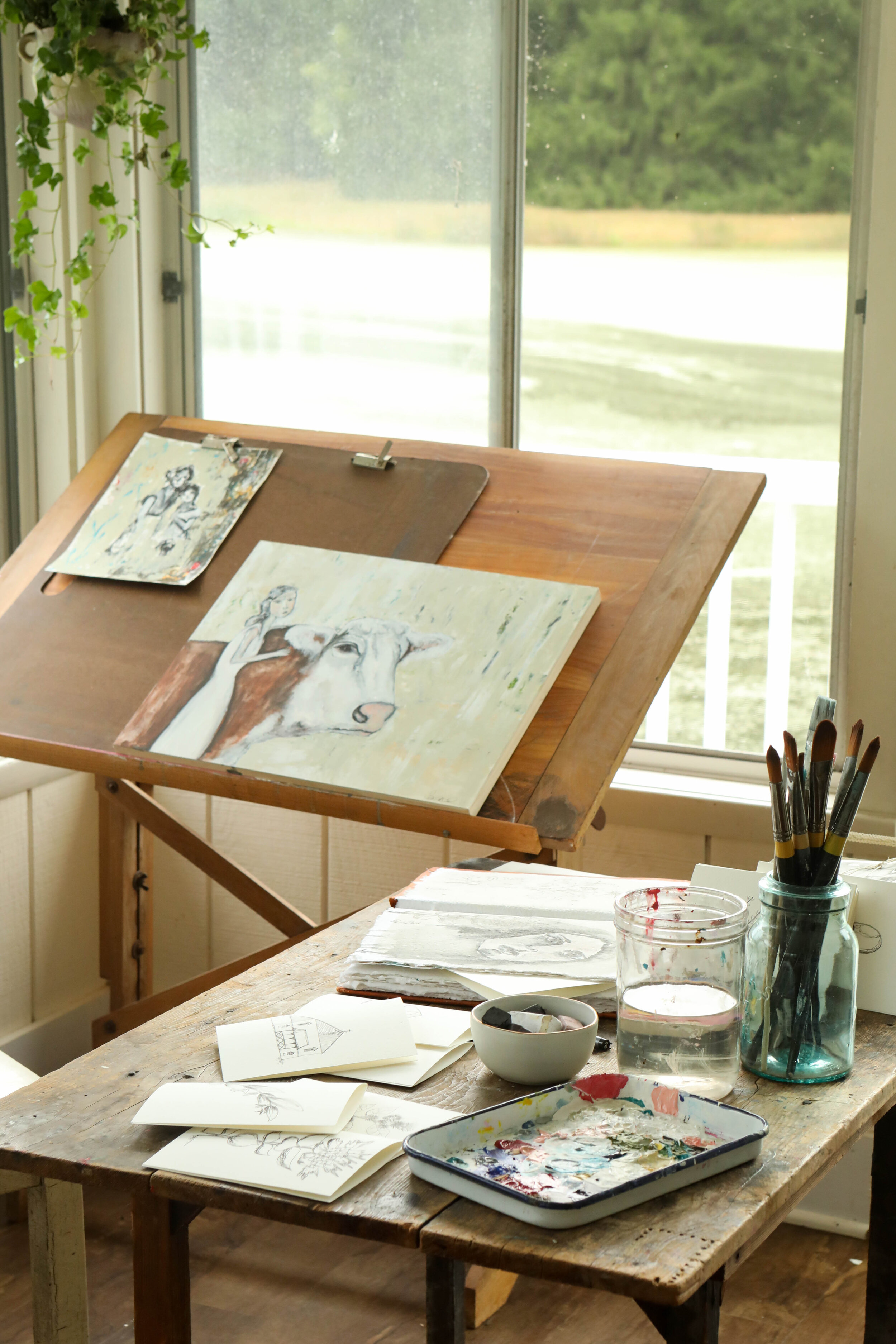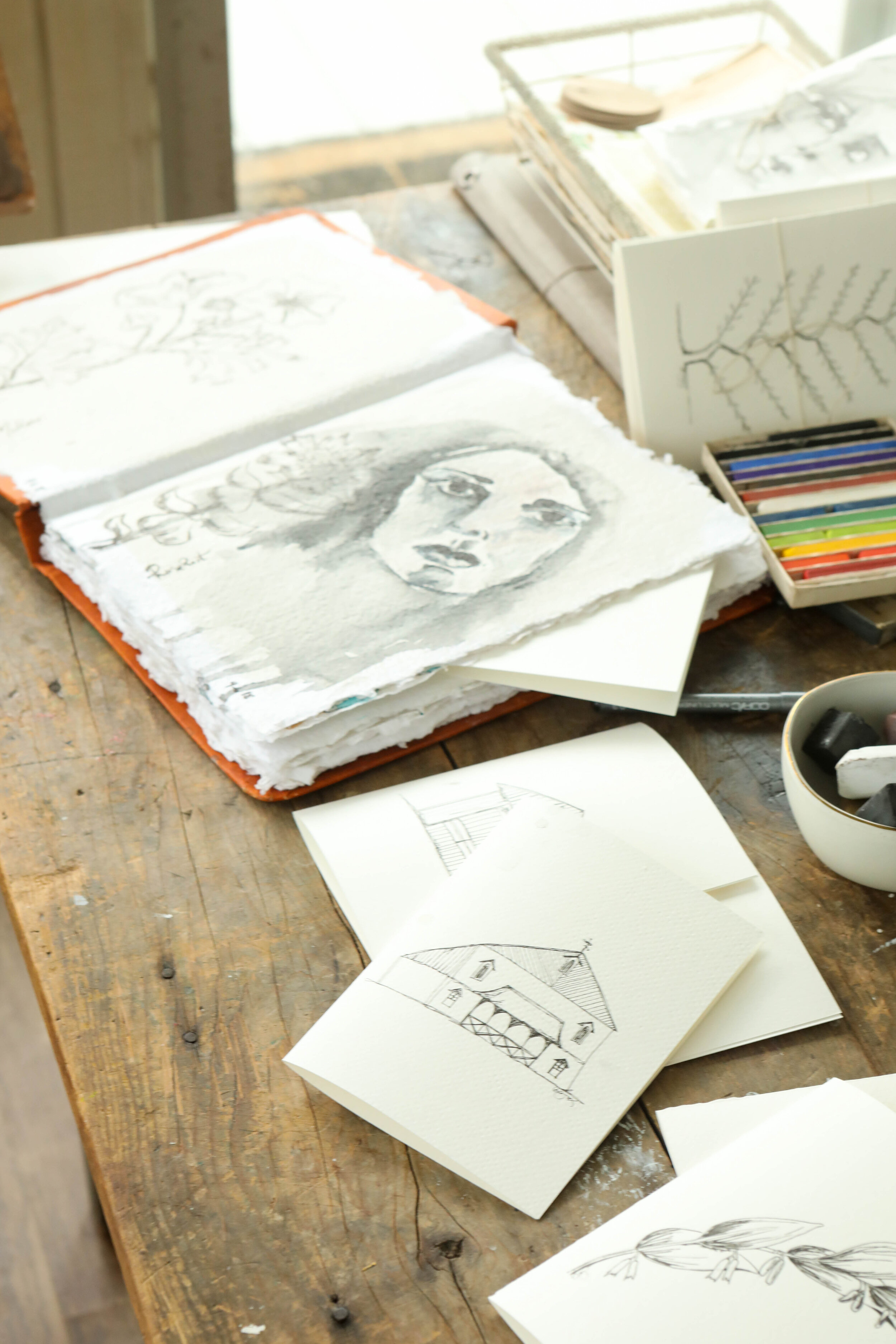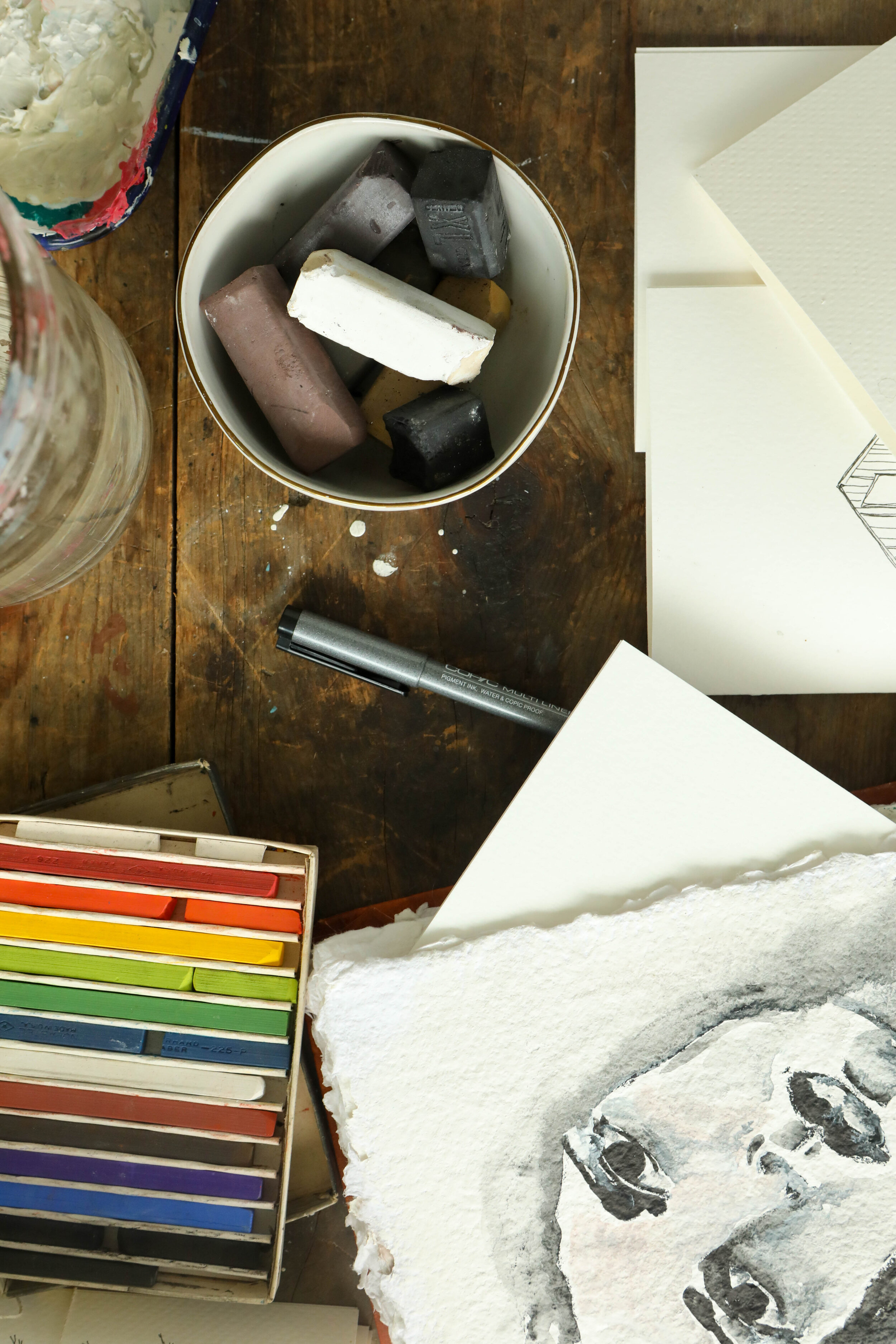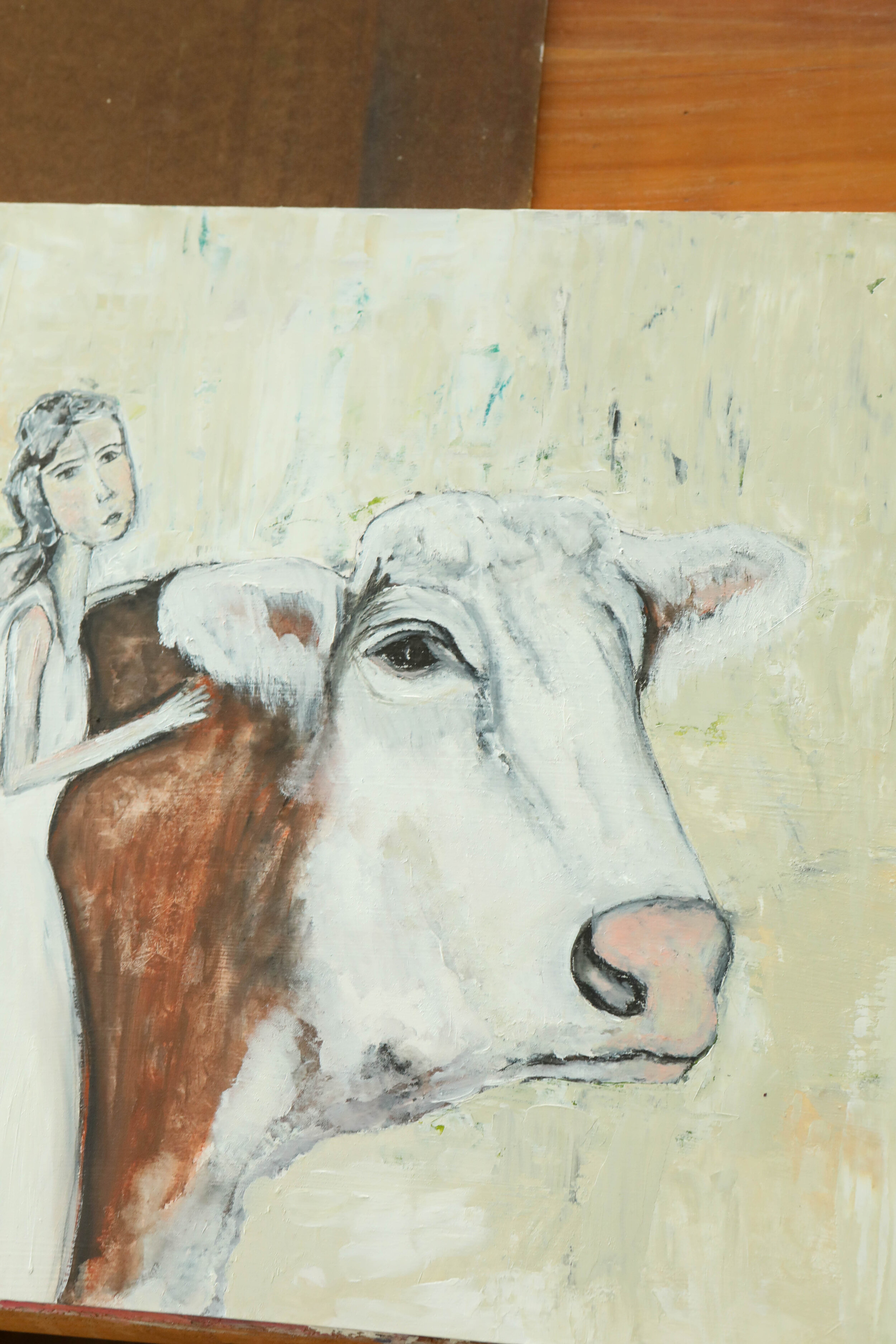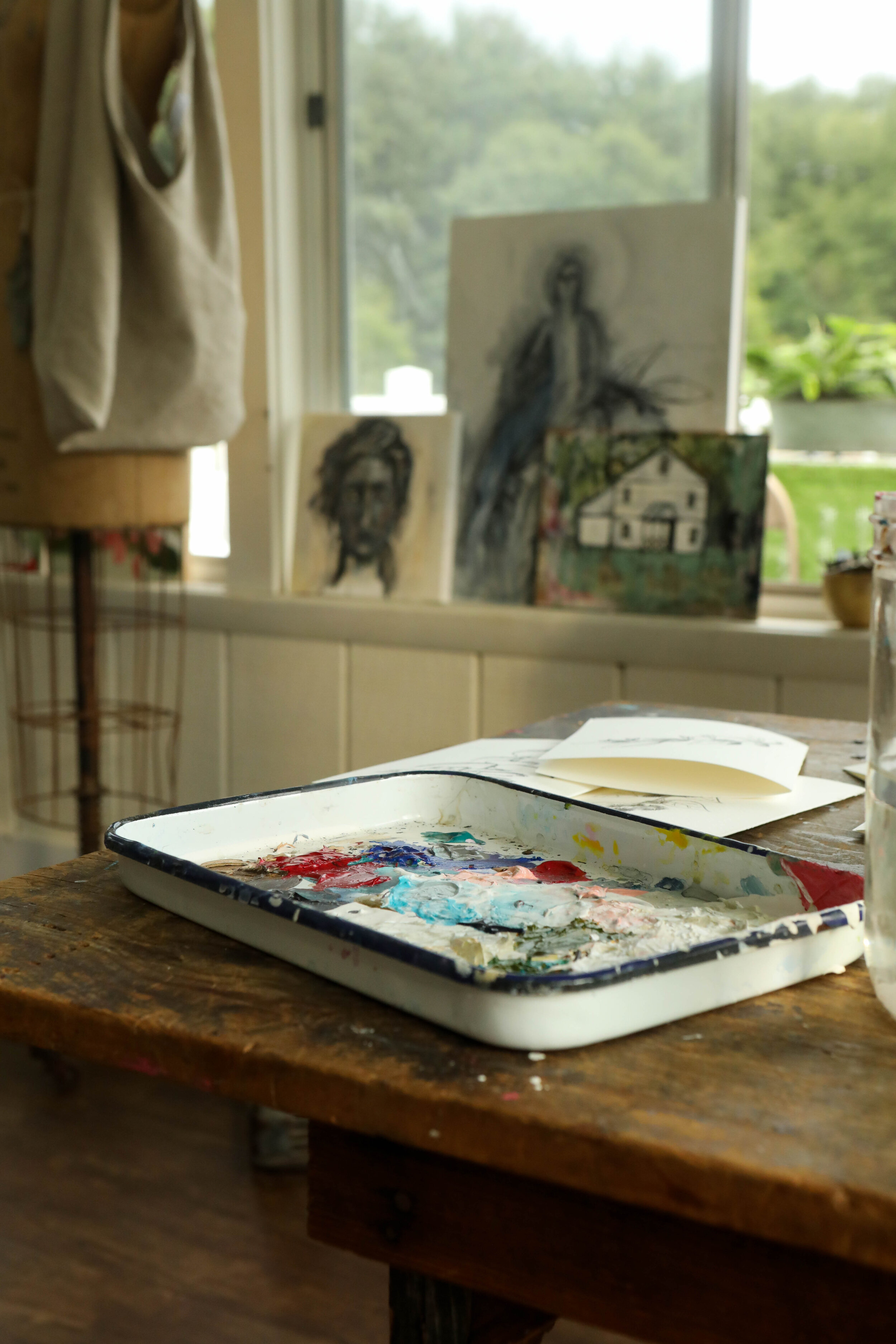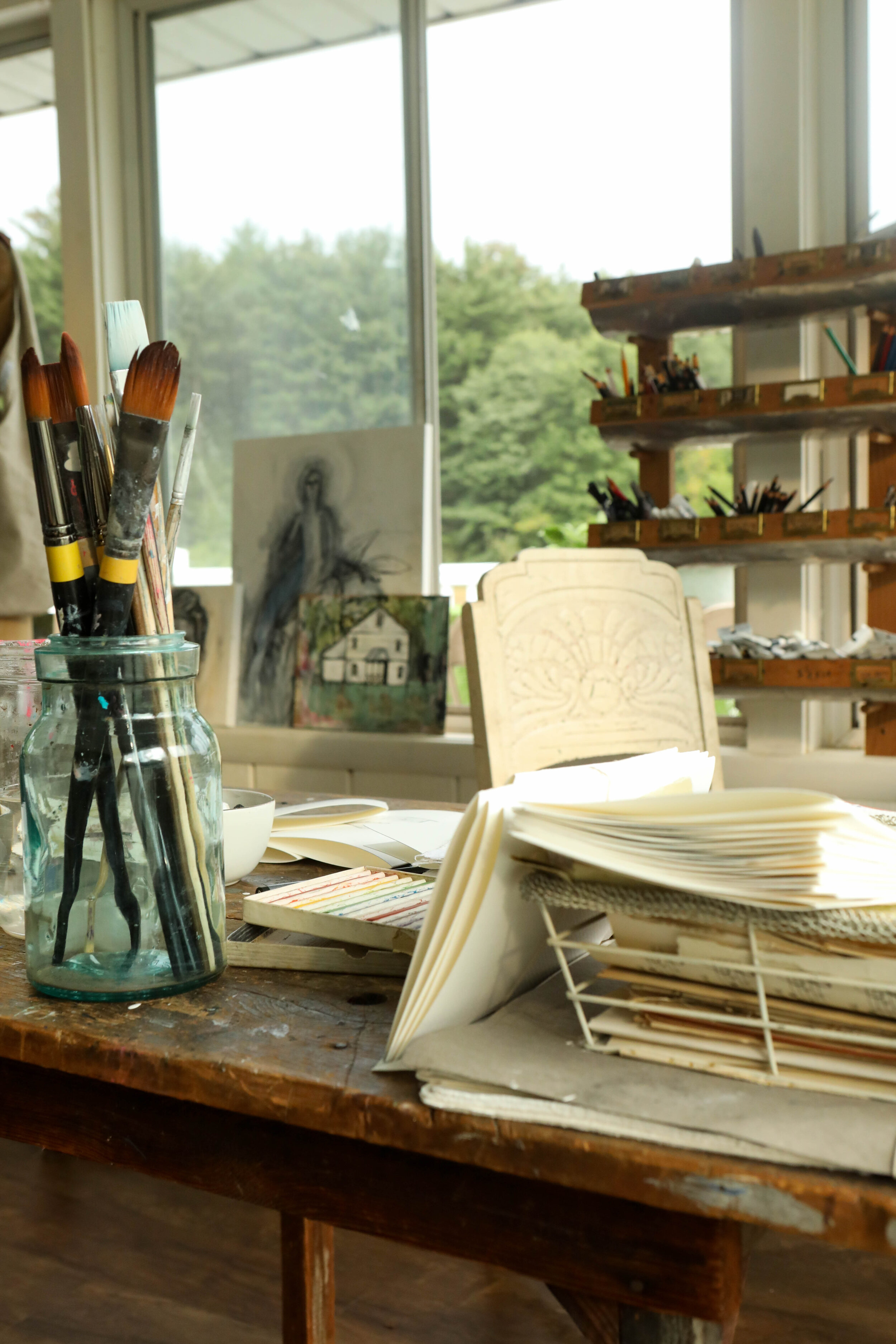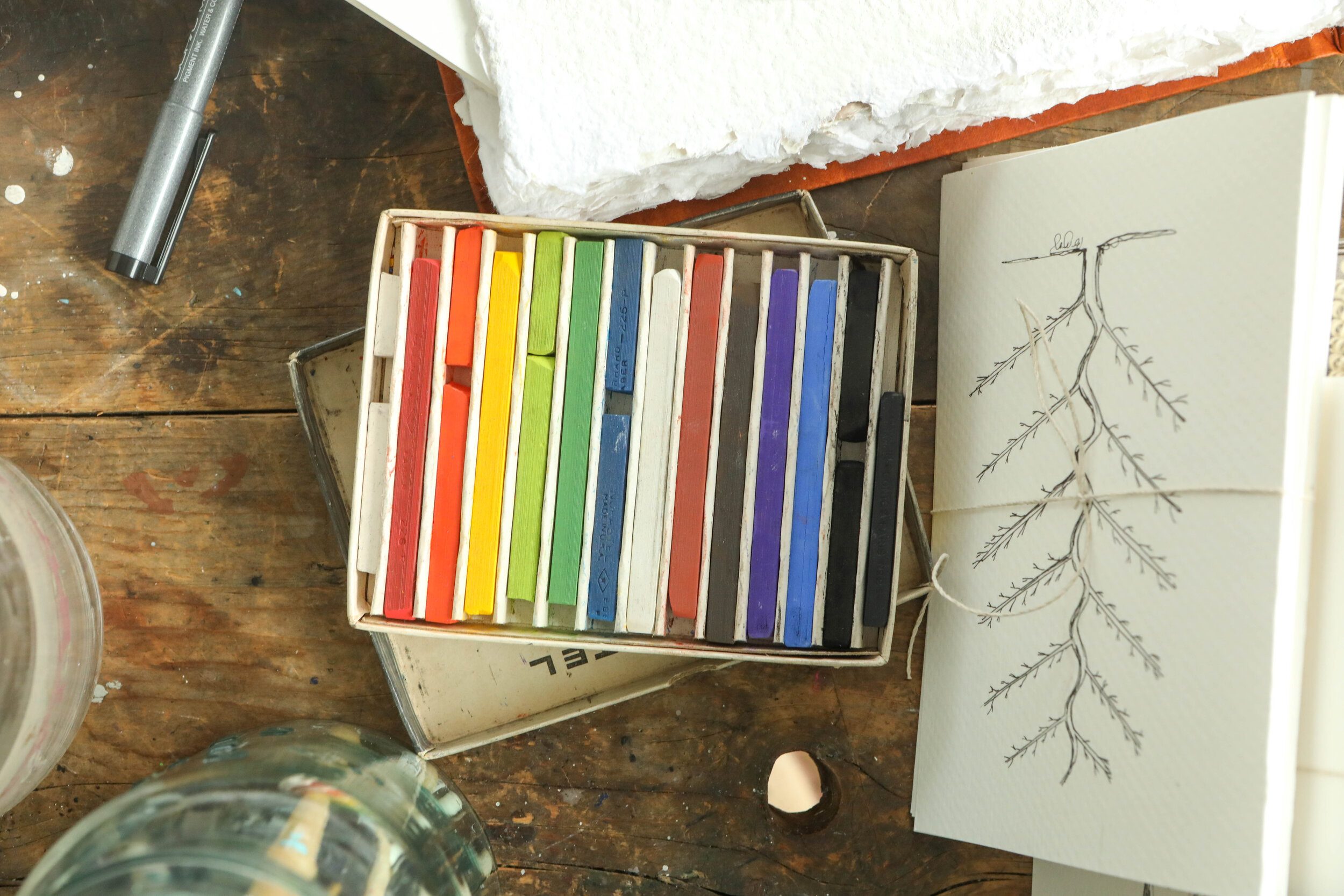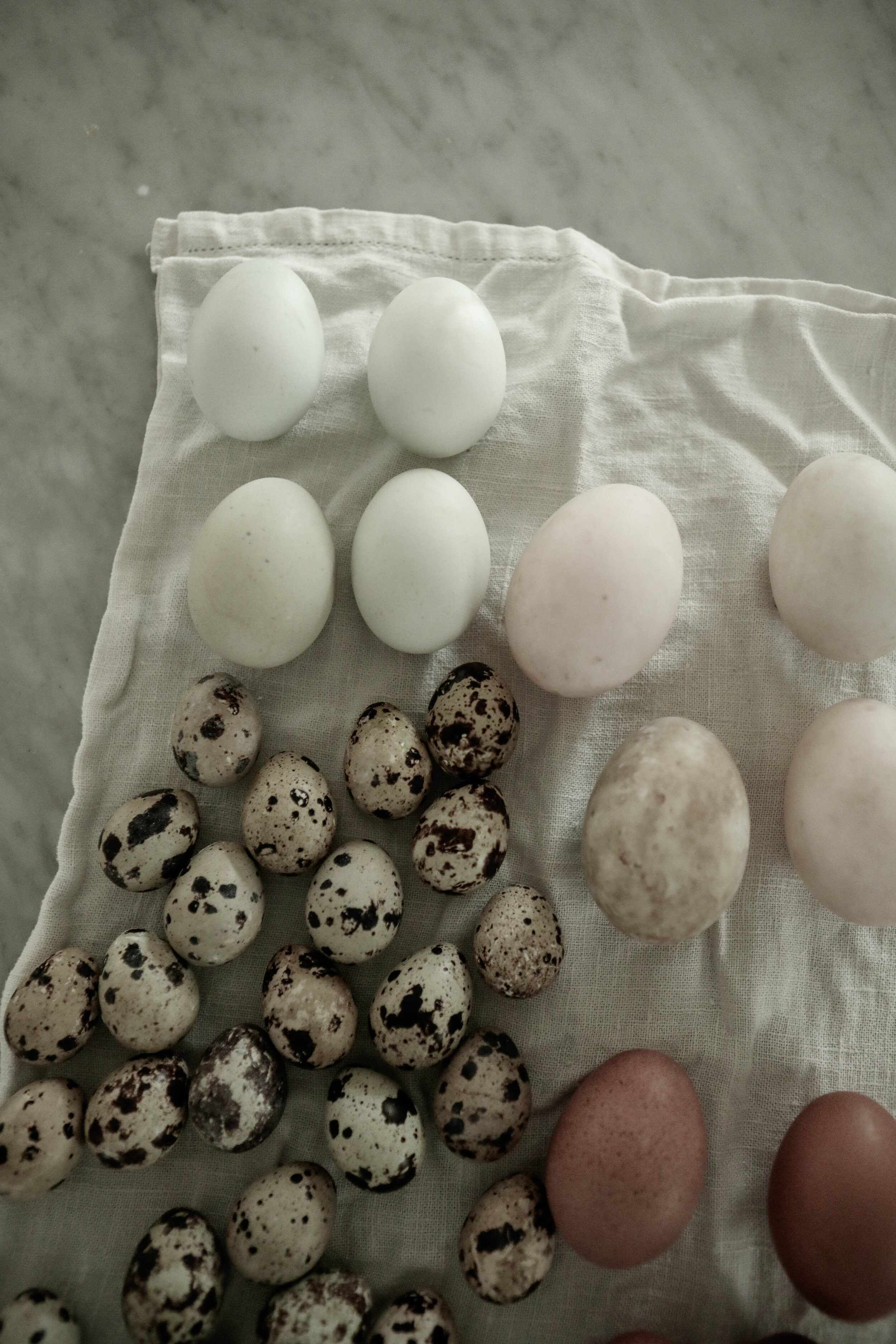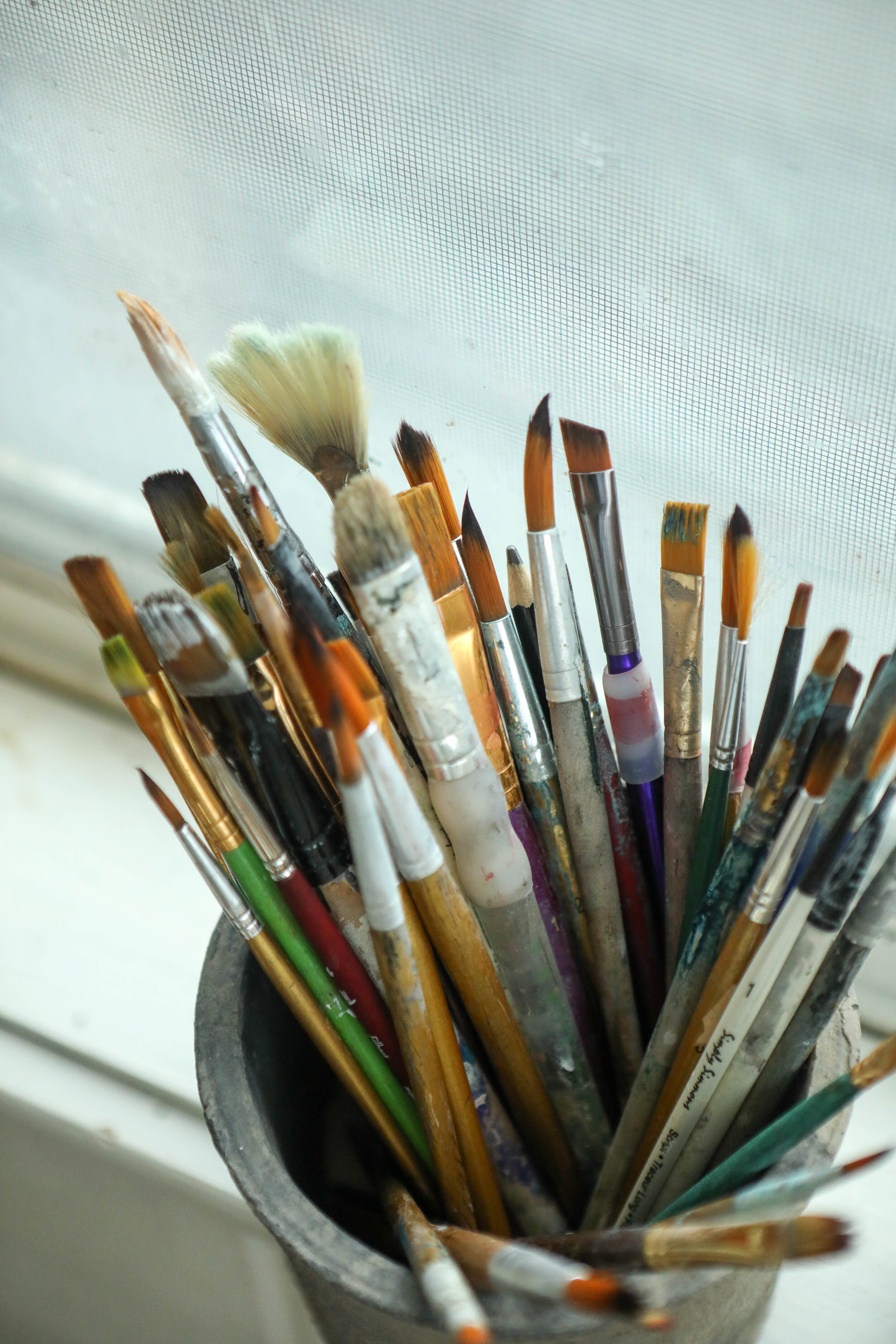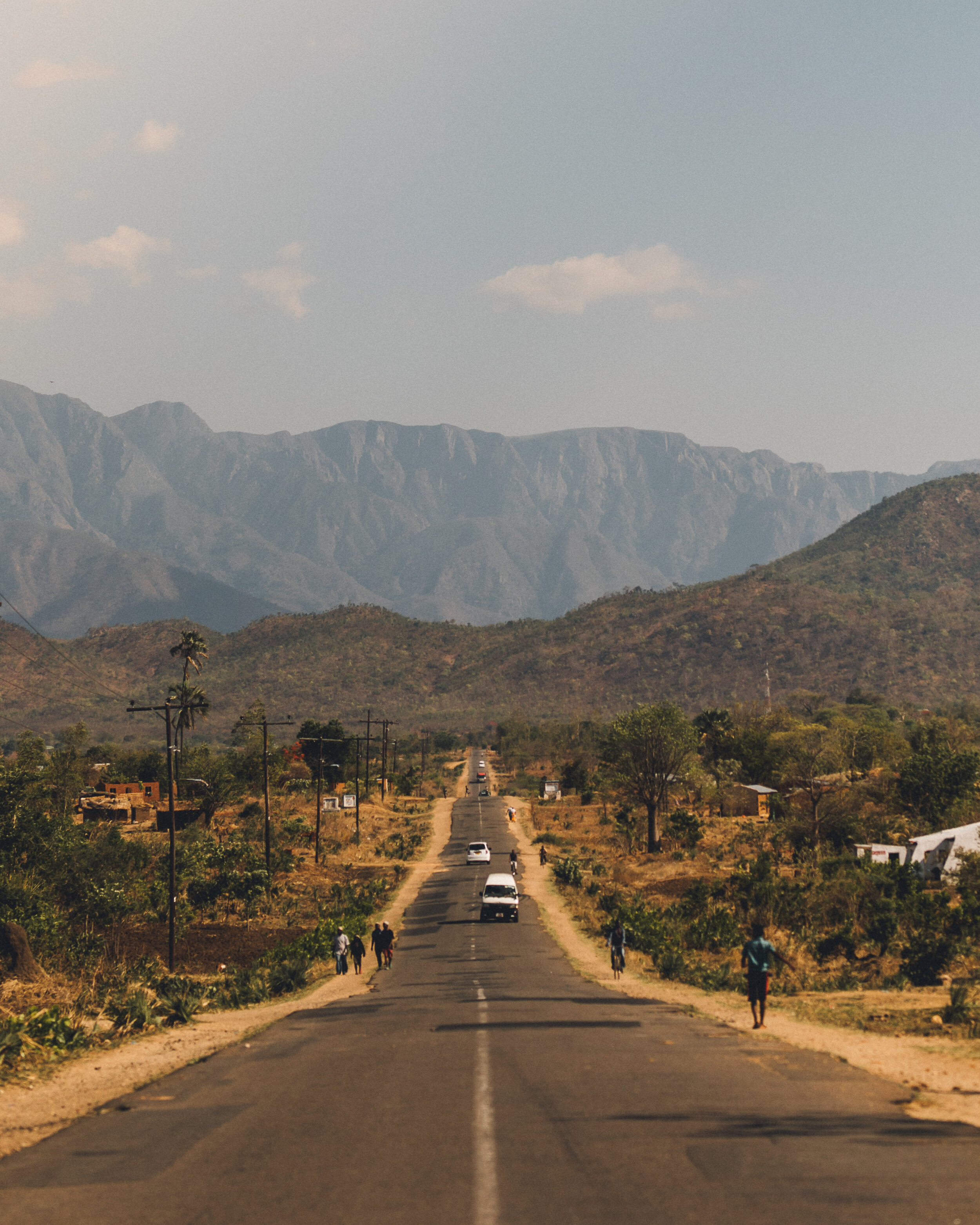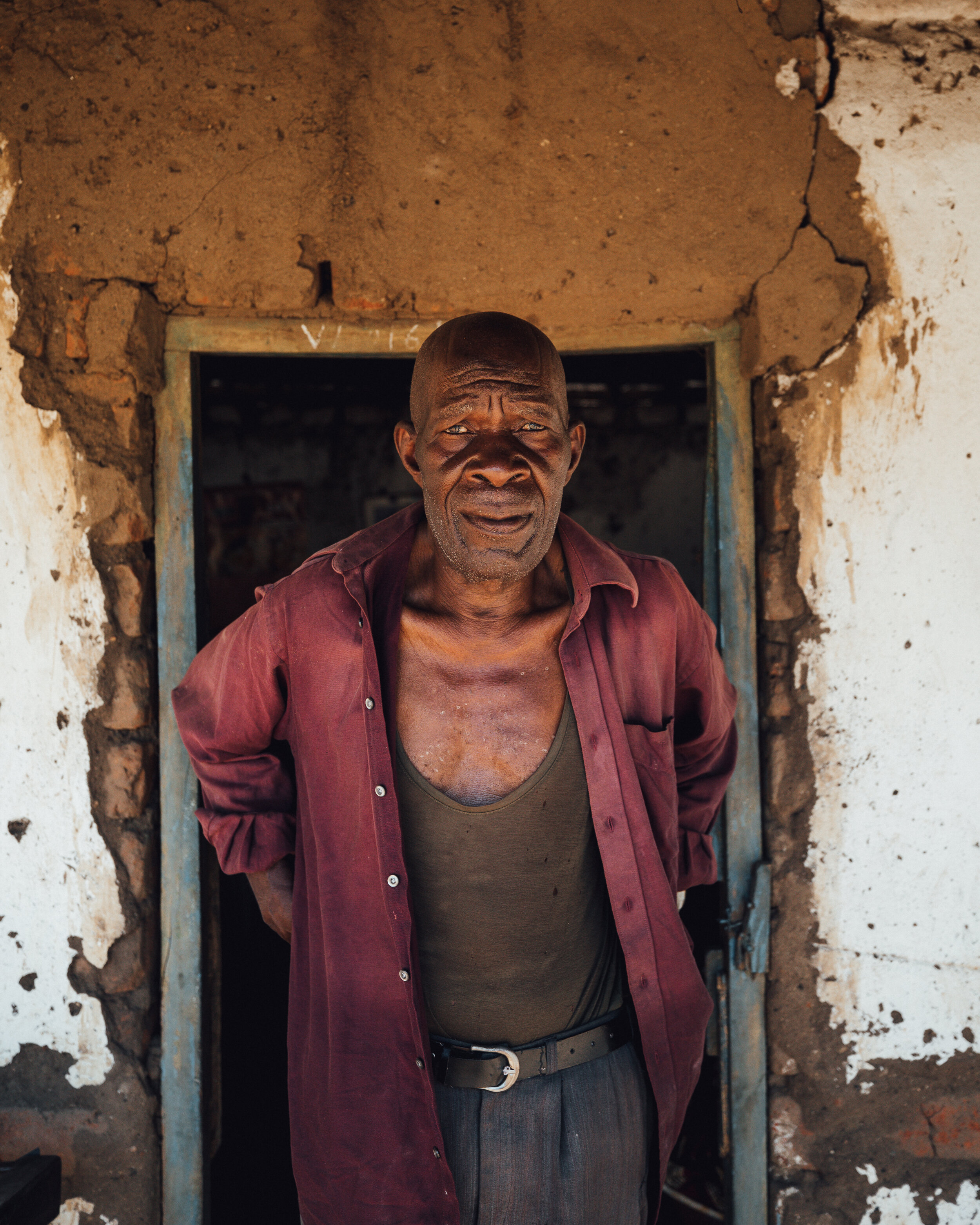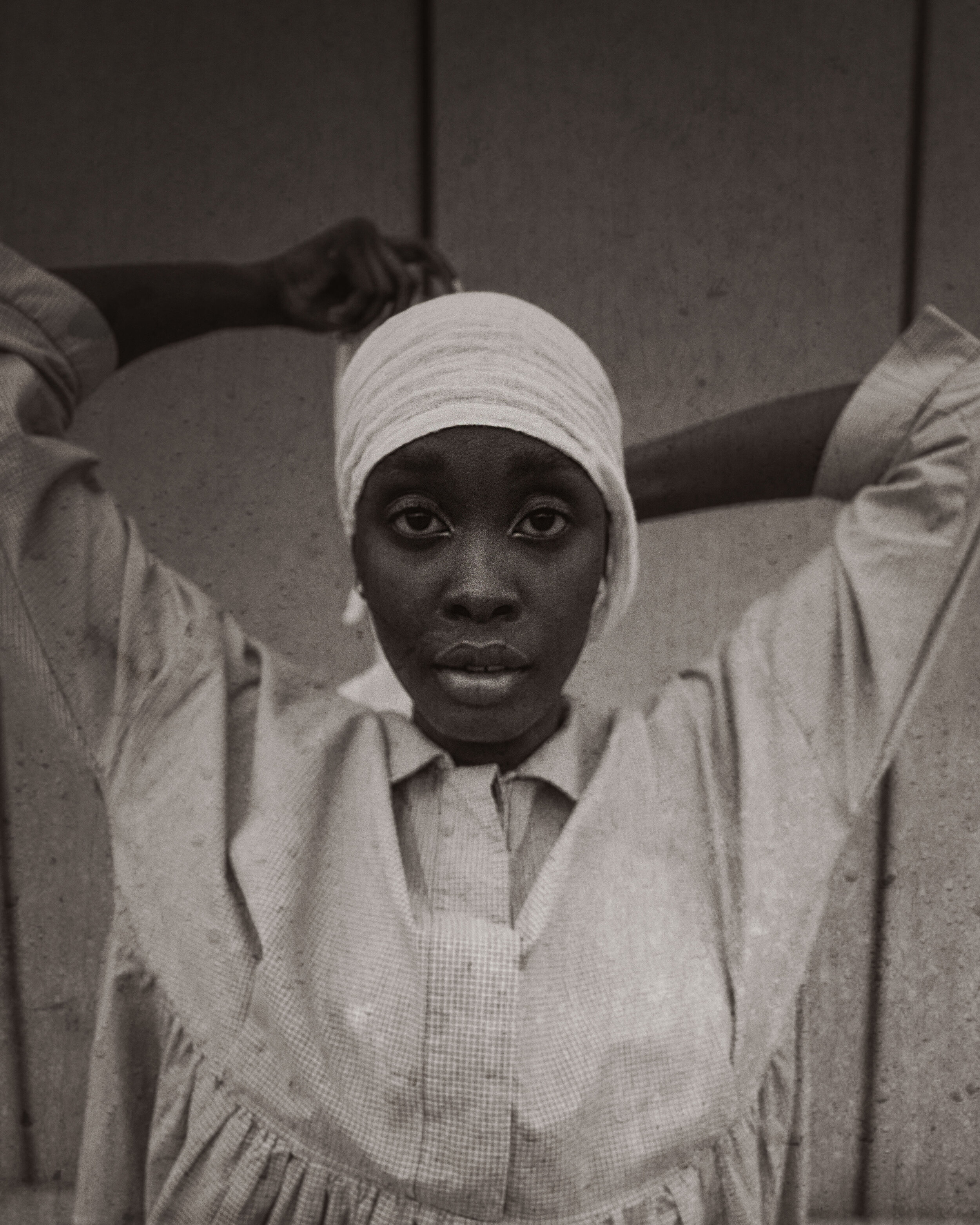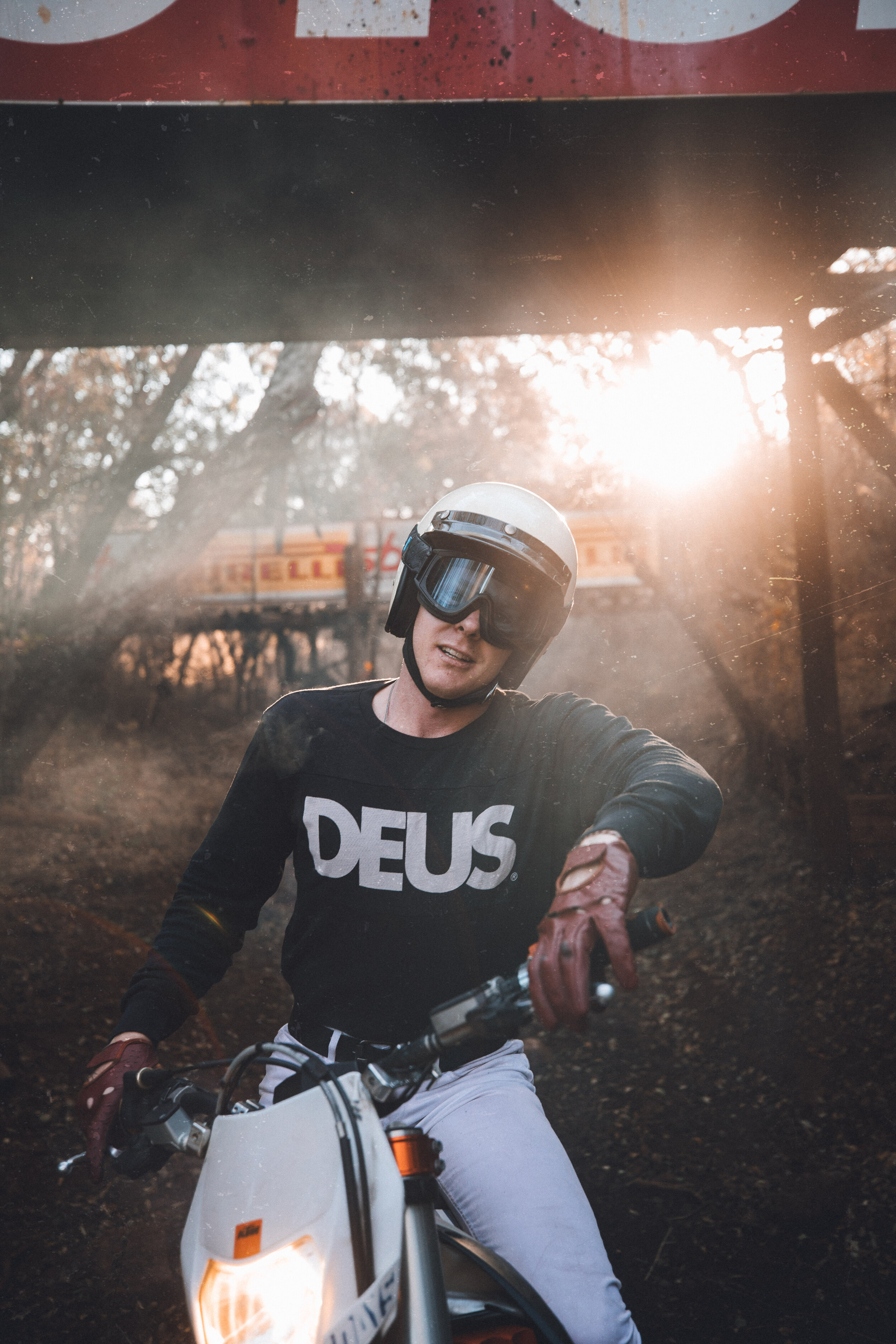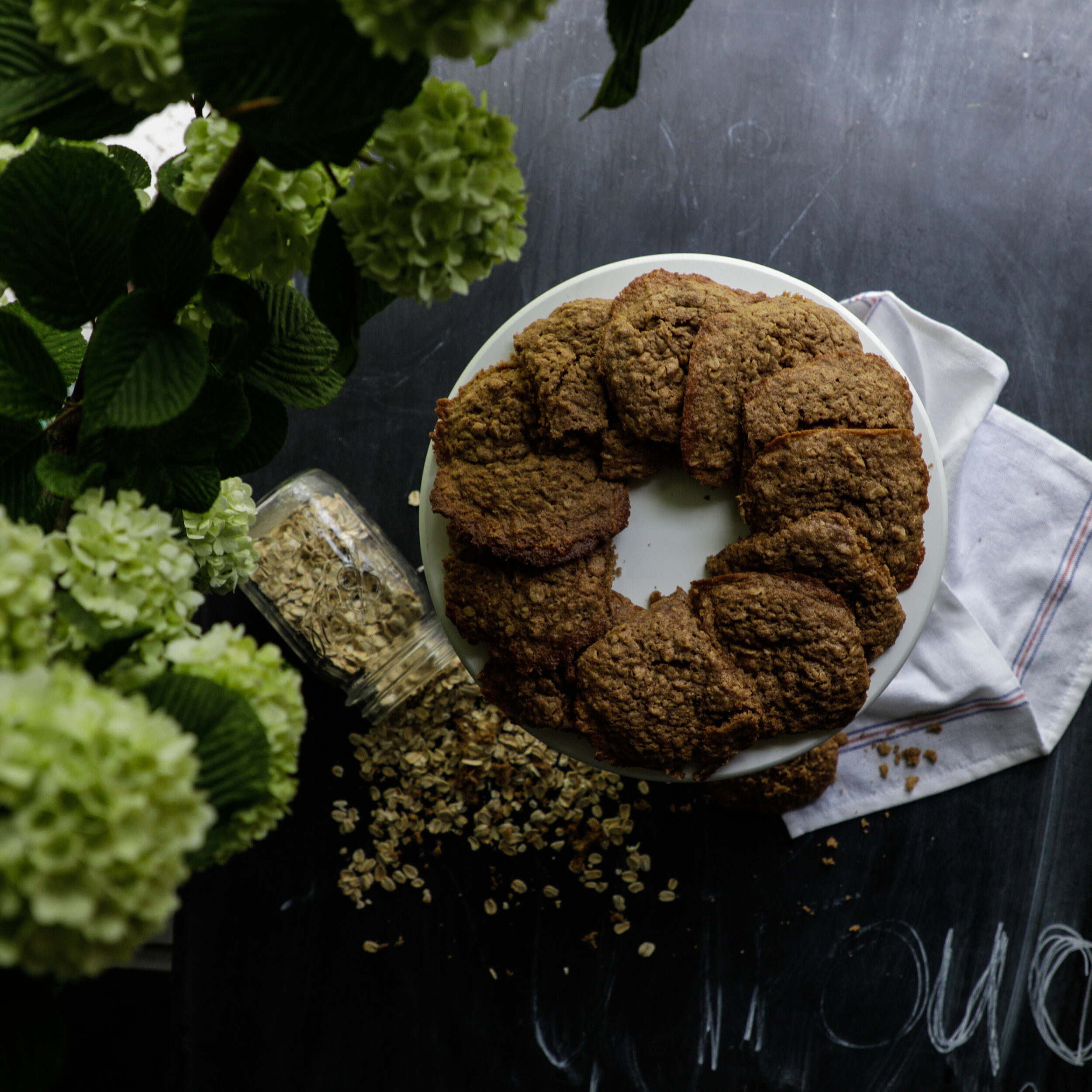Beautiful, Timeless, and Well Made — A Conversation with Fount
Ben Ashby
This conversation with FOUNT co-founder Jackie Wachter originally ran in Where Women Create
JACKIE WACHTER and her husband Phillip, are the creators and owners of FOUNT Leather of Cleveland, Ohio. FOUNT produces an ethically-produced high-quality line of leather goods, which has allowed them to support and enrich their local community. When Jackie and Phillip are not in their studio, they are taking care of their two beautiful kids and managing their two retail locations.
I grew up in Cleveland, Ohio, and according to my mother, I was a creative person straight out of the womb. My family fostered my creativity. I have my grandmother to thank for teaching me to sew when I was seven or eight- years-old—she was a very special person in my life. When I was younger, I used to daydream about potential craft projects at school. Often, I would get off my school bus with a list of supplies and have my mom take me straight to JoAnn Fabrics.
In 7th grade, I started my first business out of my locker. I loved to make macramé hemp jewelry, and my friends started to ask for their own. Soon, the girls from my classes were coming to me with requests for their own brace- lets. By demand, I would talk to my clients, sketch designs, and then go home to create their jewelry. I sold the bracelets for $12 each and was selling several a week. Unfortunately, my venture garnered the attention of the faculty, and after about a year of business and a trip to the principal’s office, I had to close up shop.
LOOKING BACK, I HAVE ALWAYS BEEN SOMEONE WHO LOVES TO WORK WITH MY HANDS.
After high school, I attended the Virginia Marti College of Art & Design and pursued a degree in fashion. While there, I was allowed to hone the skills taught to me by my family and channel them into something I was very passionate about. This was still many years though before I met my husband, Phillip, and we started FOUNT together. After college, I moved to New York for a while, but I found myself missing something. I was very lonely there, and I craved the Midwest charm I’d always known. I was seeking purpose, and after a six-month activist trip to Africa became passionate about becoming involved with my community and supporting local and ethical work. This experience allowed me to get a better view into what I could eventually create through my craft and passion.
A few years ago, all of the stars seemed to align. I met my husband, Phillip, and he became someone who inspired and motivated me daily to be creative. He is also someone who enjoys crafting with his own hands, and like me, had his own schoolyard business (selling homemade beanie babies). In our first year of dating, we decided that we would make all of our gifts for each other. Phillip made me a pair of wool mittens using a vintage Pendleton coat, as well as a cutting board. I made for him a wool pencil case, laptop sleeve, and journal. After looking at our gifts, Phillip suggested that the sewn goods could be beautifully made out of leather, and I agreed. We sought out leather and found a local cobbler that sold scraps from his hides of leather. We bought our first leather, and the sweet older couple taught us about some of the hand tools and techniques we should use.
Our first product trials were a leather wallet and lucky penny pouch. Phillip and I quickly fell in love with our newfound hobby, and after a little trial-and-error, we started to make more leather goods. At the time, I was selling vintage clothing and goods at our local market; slowly we started to introduce a small table of our leather goods alongside it. It was at one of these markets that the mother-in-law of my friend Nikki said we should start trying to design a purse. She wanted a bag for Nikki for Christmas and suggested that I give it a try. Soon after, during church, I sketched a design, showed her, and she said she would help us buy our first sewing machine to get us started. After finding a listing for a Singer 111 on Craigslist, we went to test it out. It had been used to stitch WWII parachutes, and it ended up being the sewing machine we used for our first six months of business as FOUNT.
Our first great bag was created after many discussions about what every woman would want. It quickly became apparent that our best chance would be a tote. The first produced tote though was designed in our first apartment together on Bellfield Avenue, in a tiny studio that was ten-by-ten feet. The Bellfield Tote was designed to be a durable everyday bag for anyone. This tote is now our number one seller and is currently available in three sizes. It’s gone through many small transformations, like adding two pockets and straps that are designed to be unbreakable.
OUR MISSION has been, from the beginning, that we want to make products that are beautiful, timeless, and well made—enough to last a lifetime while also being made ethically.
From that simple beginning, we have now grown our husband-and- wife business to a team of forty-six employees. It has been a wonderful four- year journey, and I am so happy that we have been able to create a thriving community within and around it.
Today, after years of hard work and leaps of faith, FOUNT has not just one, but two retail locations—as well as our studio where we manufacture. Growing up, my parents had a wire manufacturing business in the United States, and as production in our country started to move over- seas, it saddened them to have to move some of those jobs out of the
U.S.A. in order to survive in their industry. When we started FOUNT, I wanted it to be able to stimulate my local economy by making all of our products here in the United States. Today, we are happy to say that we have been able to do that by supporting our forty-six employees, as well as supporting local printers, graphic designers, packaging companies, web developers, photographers, models, etc.
FOUNT is a direct-to-consumer business, so we don’t have a face in the consumer market and boutiques. This can be a challenge, but until recently, we have regularly marketed ourselves by attending maker shows. We take pride in making a high-quality product, and word of mouth is our best type of marketing. In every bag, we place a little pouch filled with a couple of business cards that asks our new friends to share our message when people love their bag. It’s a very simple marketing solution, but FOUNT has had a lot of success because of it. We recently had an event in our Cleveland store, and a lady pulled out three business cards and approached me. “I work for Apple, and I can’t tell you how many times I have complimented your bags, but after getting several of these business cards I had to come to see what you were all about,” she said.
Aside from opening our two retail locations—in a time when people say brick-and-mortar is dead—one of the greatest accomplishments we have had has been our success in building inventory. When we first started, we were making each bag by hand, one-by-one. Now, we do batches by type of hide or pattern. We were part of a television show that helped business-owners with their models, and one constant piece of advice we were getting was that our website was always sold out. We learned that we needed to take a leap of faith, bought a ton of leather, hired nine new employees and built our first inventory. It was a great success and having a product on hand that a potential customer wanted has allowed us to grow our business further. We now offer handbags, as well as, clutches, wristlets, wallets and other leather accessories.
Every day with FOUNT seems to fly by. It’s very rewarding, and a lot of work, but getting to work with artists and artisans to create and share products makes it all worth it. We have three new designs coming soon and are planning to create more elevated designs that can be formal as well. Through this business, I’ve been able to do something impactful, both in my community and across the world—like our partnership which brought over ten thousand dollars to dig wells in Africa and provide clean water. Being able to share our products with the world and see the positive impact they bring to our families, friends, and community makes every minute of this business worth it.


